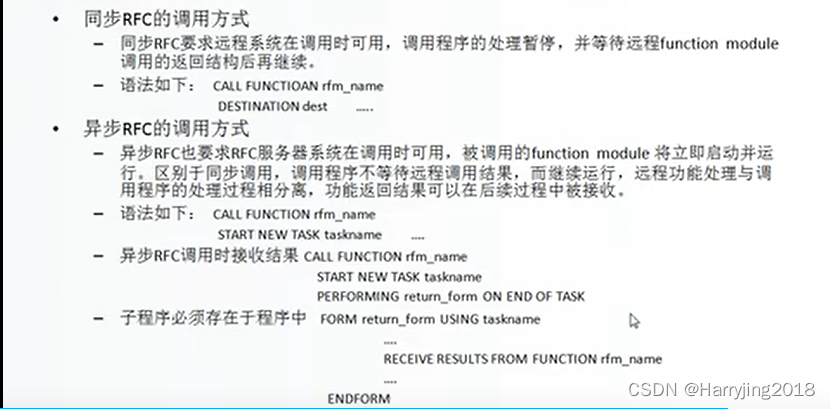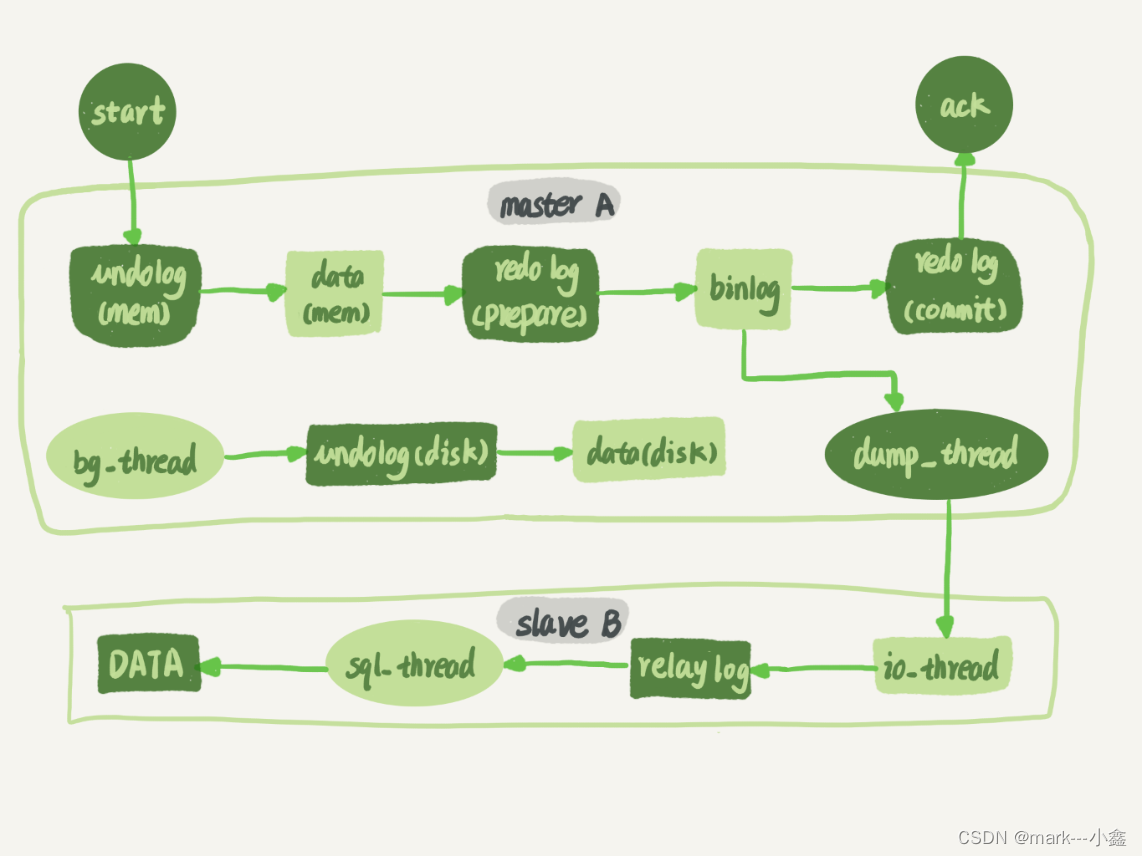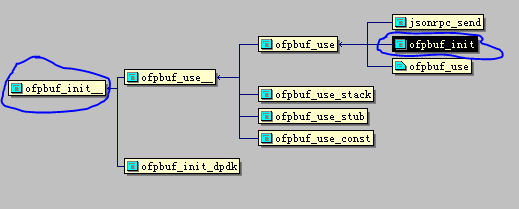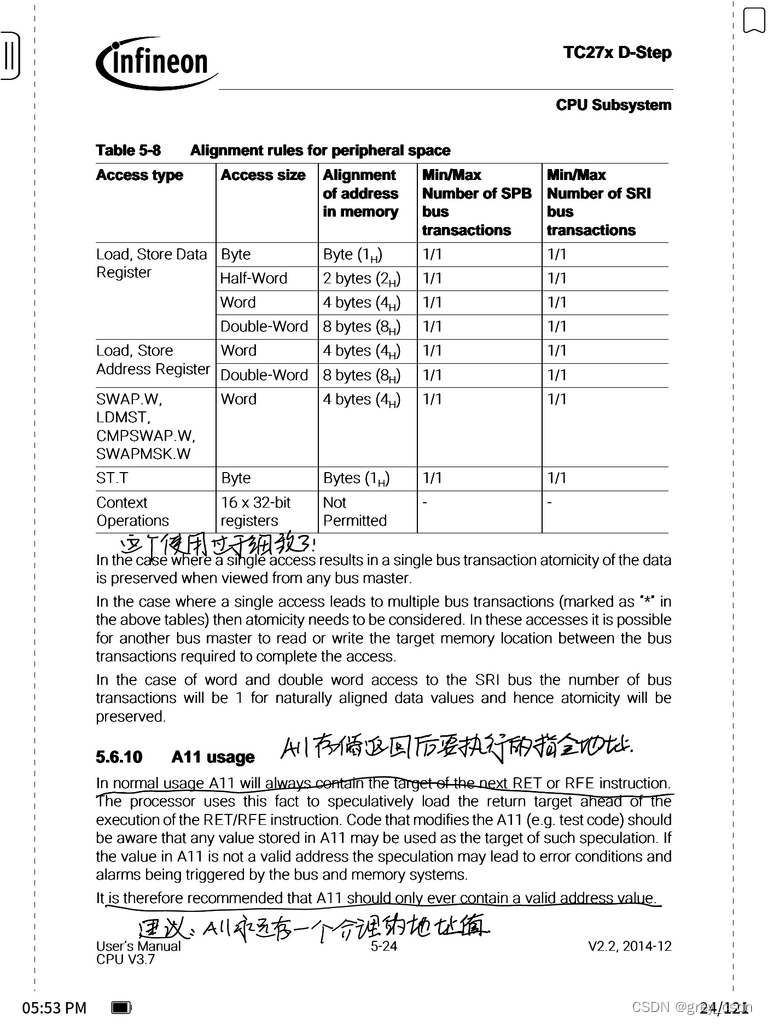目录
SpringMVC简介
MVC模型
SpringMVC
SpringMVC入门案例
SpringMVC执行流程
SpringMVC的组件
组件的工作流程
SpringMVC参数获取_封装为简单数据类型
SpringMVC参数获取_封装为对象类型
封装单个对象
封装关联对象
SpringMVC参数获取_封装为集合类型
封装为List集合
封装为简单数据类型集合
封装为对象类型集合
封装为Map集合
SpringMVC参数获取_使用Servlet原生对象获取参数
SpringMVC参数获取_自定义参数类型转换器
SpringMVC参数获取_编码过滤器
SpringMVC处理响应_配置视图解析器
SpringMVC处理响应_控制器方法的返回值
SpringMVC处理响应_request域设置数据
SpringMVC处理响应_session域设置数据
SpringMVC处理响应_context域设置数据
SpringMVC处理响应_请求转发&重定向
SpringMVC的常用注解:
SpringMVC注解_@Controller
SpringMVC注解_@RequestMapping
SpringMVC注解_@RequestParam
SpringMVC注解_@RequestHeader、@CookieValue
@RequestHeader
@CookieValue
SpringMVC注解_@SessionAttributes
SpringMVC注解_@ModelAttribute
SpringMVC注解_RESTful风格支持
RESTful风格介绍
Postman使用
@PathVariable
@PostMapping、@GetMapping、@PutMapping、 @DeleteMapping
HiddentHttpMethodFilter
SpringMVC注解_@ResponseBody
SpringMVC注解_@RestController
静态资源映射
SpringMVC注解_@RequestBody
SpringMVC文件上传_原生方式上传
SpringMVC文件上传_SpringMVC方式上传
SpringMVC文件上传_上传多文件
SpringMVC文件上传_异步上传
SpringMVC文件上传_跨服务器上传
SpringMVC文件上传_文件下载
SpringMVC异常处理_单个控制器异常处理
SpringMVC异常处理_全局异常处理
SpringMVC异常处理_自定义异常处理器
SpringMVC拦截器_拦截器简介
SpringMVC拦截器_拦截器使用
SpringMVC拦截器_全局拦截器
SpringMVC拦截器_拦截器链与执行顺序
SpringMVC拦截器_拦截器过滤敏感词案例
SpringMVC跨域请求_同源策略
SpringMVC跨域请求_跨域请求
SpringMVC跨域请求_控制器接收跨域请求
SSM整合_需求分析
SSM整合_创建父工程
SSM整合_创建dao子工程
SSM整合_创建service子工程
SSM整合_创建controller子工程
SSM整合_运行项目
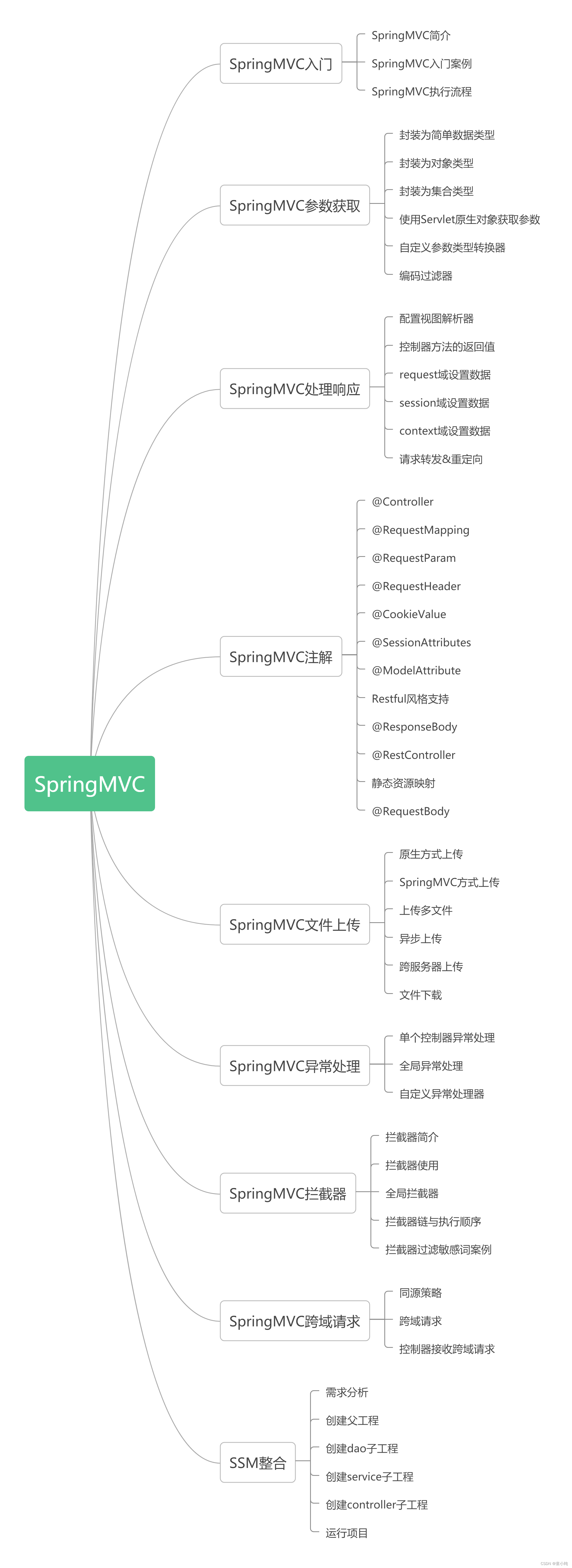
SpringMVC简介
MVC模型
MVC全称Model View Controller,是一种设计创建Web应用程序的 模式。这三个单词分别代表Web应用程序的三个部分:
Model(模型):指数据模型。用于存储数据以及处理用户请求 的业务逻辑。在Web应用中,JavaBean对象,业务模型等都属 于Model。
View(视图):用于展示模型中的数据的,一般为jsp或html文 件。
Controller(控制器):是应用程序中处理用户交互的部分。接 受视图提出的请求,将数据交给模型处理,并将处理后的结果交 给视图显示。

SpringMVC
SpringMVC是一个基于MVC模式的轻量级Web框架,是Spring框架 的一个模块,和Spring可以直接整合使用。SpringMVC代替了 Servlet技术,它通过一套注解,让一个简单的Java类成为处理请求 的控制器,而无须实现任何接口。
SpringMVC入门案例

接下来我们编写一个SpringMVC的入门案例
1、使用maven创建web项目,补齐包结构。
2、引入相关依赖和tomcat插件
<dependencies> <!-- Spring核心模块 --> <dependency> <groupId>org.springframework</groupId> <artifactId>springcontext</artifactId> <version>5.2.12.RELEASE</version> </dependency> <!-- SpringWeb模块 --> <dependency> <groupId>org.springframework</groupId> <artifactId>springweb</artifactId> <version>5.2.12.RELEASE</version> </dependency> <!-- SpringMVC模块 --> <dependency> <groupId>org.springframework</groupId> <artifactId>springwebmvc</artifactId> <version>5.2.12.RELEASE</version> </dependency> <!-- Servlet --> <dependency> <groupId>javax.servlet</groupId> <artifactId>servletapi</artifactId> <version>2.5</version> <scope>provided</scope> </dependency> <!-- JSP --> <dependency> <groupId>javax.servlet.jsp</groupId> <artifactId>jsp-api</artifactId> <version>2.0</version> <scope>provided</scope> </dependency> </dependencies> <build> <plugins> <!-- tomcat插件 --> <plugin> <groupId>org.apache.tomcat.maven</groupId> <artifactId>tomcat7-maven-plugin</artifactId> <version>2.1</version> <configuration> <port>8080</port> <path>/</path> <uriEncoding>UTF8</uriEncoding> <server>tomcat7</server> <systemProperties> <java.util.logging.SimpleFormatter.format>%1$tH:%1$tM:%1$tS %2$s%n%4$s: %5$s%6$s%n </java.util.logging.SimpleFormatter.format> </systemProperties> </configuration> </plugin> </plugins> </build>3、在web.xml中配置前端控制器DispatcherServlet。
<web-app> <display-name>Archetype Created Web Application</display-name> <!--SpringMVC前端控制器,本质是一个 Servlet,接收所有请求,在容器启动时就会加载--> <servlet> <servlet-name>dispatcherServlet</servlet-name> <servlet-class>org.springframework.web.servlet.DispatcherServlet</servlet-class> <init-param> <param-name>contextConfigLocation</param-name> <param-value>classpath:springmvc.xml</paramvalue> </init-param> <load-on-startup>1</load-onstartup> </servlet> <servlet-mapping> <servlet-name>dispatcherServlet</servlet-name> <url-pattern>/</url-pattern> </servlet-mapping> </web-app>4 编写SpringMVC核心配置文件springmvc.xml,该文件和Spring 配置文件写法一样。
<?xml version="1.0" encoding="UTF-8"?> <beans xmlns="http://www.springframework.org/schema/beans" xmlns:mvc="http://www.springframework.org/schema/mvc" xmlns:context="http://www.springframework.org/schema/context" xmlns:xsi="http://www.w3.org/2001/XMLSchema-instance" xsi:schemaLocation=" http://www.springframework.org/schema/beans http://www.springframework.org/schema/beans/spring-beans.xsd http://www.springframework.org/schema/mvc http://www.springframework.org/schema/mvc/spring-mvc.xsd http://www.springframework.org/schema/context http://www.springframework.org/schema/context/spring-context.xsd"> <!-- 扫描包 --> <context:component-scan base-package="com.itbaizhan"/> <!-- 开启SpringMVC注解的支持 --> <mvc:annotation-driven/> </beans>5、编写控制器
@Controller public class MyController1 { // 该方法的访问路径是/c1/hello1 @RequestMapping("/c1/hello1") public void helloMVC(){ System.out.println("hello SpringMVC!"); } }6 使用tomcat插件启动项目,访问 http://localhost:8080/c1/hello1
SpringMVC执行流程
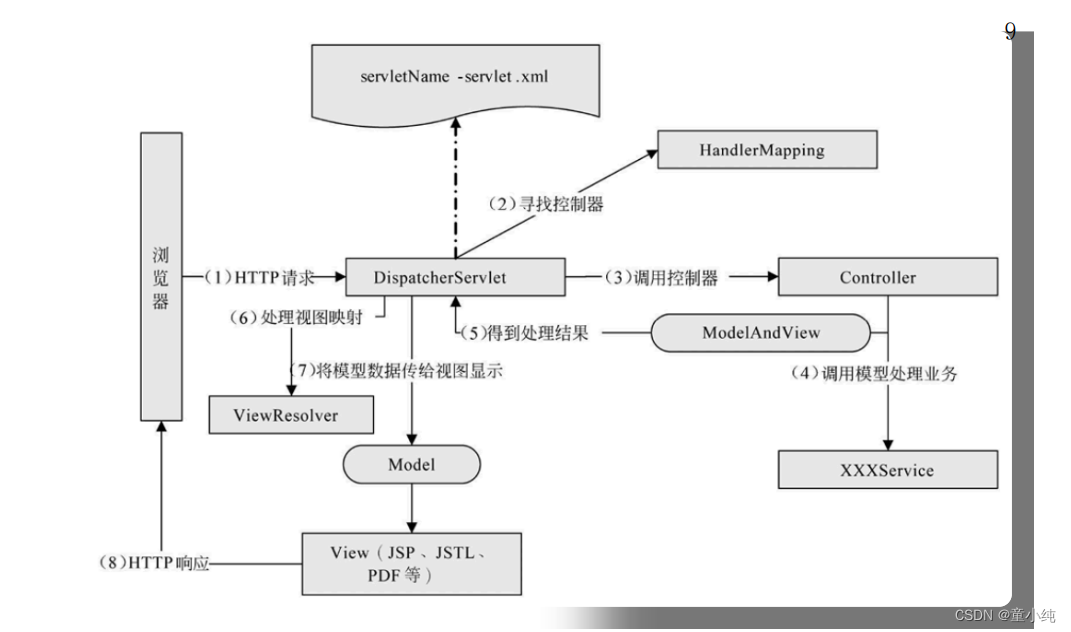
SpringMVC的组件
DispatcherServlet:前端控制器,接受所有请求,调用其他组件。
HandlerMapping:处理器映射器,根据配置找到方法的执行链。
HandlerAdapter:处理器适配器,根据方法类型找到对应的处理器。
ViewResolver:视图解析器,找到指定视图。
组件的工作流程
1、客户端将请求发送给前端控制器。
2、前端控制器将请求发送给处理器映射器,处理器映射器根据路径找到方法的执行链,返回给前端控 制器。
3、前端控制器将方法的执行链发送给处理器适配器,处理器适配器根据方法类型找到对应的处理器。
4、处理器执行方法,将结果返回给前端控制器。
5、前端控制器将结果发送给视图解析器,视图解析器找到视图文件位置。
6、视图渲染数据并将结果显示到客户端。
SpringMVC参数获取_封装为简单数据类型
在Servlet中我们通过 request.getParameter(name) 获取请求参数。该方式存 在两个问题:
1、请求参数较多时会出现代码冗余。
2、与容器紧耦合。
而SpringMVC支持参数注入的方式用于获取请求数据,即将请求参 数直接封装到方法的参数当中。用法如下:
1、编写控制器方法
// 获取简单类型参数 @RequestMapping("/c1/param1") public void simpleParam(String username,int age){ System.out.println(username); System.out.println(age); }2、访问该方法时,请求参数名和方法参数名相同,即可完成自动封装。
SpringMVC参数获取_封装为对象类型

SpringMVC支持将参数直接封装为对象,写法如下:
封装单个对象
1、编写实体类
public class Student { private int id; private String name; private String sex; // 省略getter/setter/tostring }2、编写控制器方法
// 获取对象类型参数 @RequestMapping("/c1/param2") public void objParam(Student student){ System.out.println(student); }3、访问该方法时,请求参数名和方法参数的属性名相同,即可完成自动封装。
封装关联对象
1、编写实体类
public class Address { private String info; //地址信息 private String postcode; //邮编 // 省略getter/setter/tostring } public class Student { private int id; private String name; private String sex; private Address address; // 地址对象 // 省略getter/setter/tostring }2、编写控制器方法
// 获取关联对象类型参数 @RequestMapping("/c1/param3") public void objParam2(Student student){ System.out.println(student); }3、访问该方法时,请求参数名和方法参数的属性名相同,即可完成自动封装。
我们也可以使用表单发送带有参数的请求:
<%@ page contentType="text/html;charset=UTF-8" language="java" %> <html> <head> <title>表单提交</title> </head> <body> <form action="/c1/param3" method="post"> id:<input name="id"> 姓名:<input name="name"> 性别:<input name="sex"> 住址:<input name="address.info"> 邮编:<input name="address.postcode"> <input type="submit"> </form> </body> </html>
SpringMVC参数获取_封装为集合类型

SpringMVC支持将参数封装为List或Map集合,写法如下:
封装为List集合
封装为简单数据类型集合
1、编写控制器方法
// 绑定简单数据类型List参数,参数前必须添加 @RequestParam注解 @RequestMapping("/c1/param4") public void listParam(@RequestParamList<String> users){ System.out.println(users); }该方式也可以绑定数组类型:
@RequestMapping("/c1/param5") public void listParam2(@RequestParam String[] users){ System.out.println(users[0]); System.out.println(users[1]); }2、请求的参数写法
封装为对象类型集合
SpringMVC不支持将参数封装为对象类型的List集合,但可以封装 到有List属性的对象中。
1、编写实体类
public class Student { private int id; private String name; private String sex; private List<Address> address; // 地址集合 // 省略getter/setter/tostring }2、编写控制器方法
// 对象中包含集合属性 @RequestMapping("/c1/param6") public void listParam3(Student student){ System.out.println(student); }3、请求的参数写法
封装为Map集合
同样,SpringMVC要封装Map集合,需要封装到有Map属性的对象中。
1、编写实体类
public class Student { private int id; private String name; private String sex; private Map<String,Address> address; // 地址集合 // 省略getter/setter/tostring }2、编写控制器方法
// 对象中包含Map属性 @RequestMapping("/c1/param7") public void mapParam(Student student){ System.out.println(student); }3、请求的参数写法
SpringMVC参数获取_使用Servlet原生对象获取参数

SpringMVC也支持使用Servlet原生对象,在方法参数中定义 HttpServletRequest 、 HttpServletResponse 、 HttpSession 等类型的参数即可直接在 方法中使用。
// 使用Servlet原生对象 @RequestMapping("/c1/param8") public void servletParam(HttpServletRequest request, HttpServletResponse response, HttpSession session){ // 原生对象获取参数 System.out.println(request.getParameter("name")); System.out.println(response.getCharacterEncoding()); System.out.println(session.getId()); }访问该方法即可:http://localhost:8080/c1/param8?name=bjwan
一般情况下,在SpringMVC中都有对Servlet原生对象的方法的 替代,推荐使用SpringMVC的方式代替Servlet原生对象。
SpringMVC参数获取_自定义参数类型转换器

前端传来的参数全部为字符串类型,SpringMVC使用自带的转换器 将字符串参数转为需要的类型。如:
// 获取简单类型参数
@RequestMapping("/c1/param1")
public void simpleParam(String username,int age){
System.out.println(username);
System.out.println(age);
}请求路径:http://localhost:8080/c1/param1?username=bz&age =10
但在某些情况下,无法将字符串转为需要的类型,如:
@RequestMapping("/c1/param9")
public void dateParam(Date birthday){
System.out.println(birthday);
}由于日期数据有很多种格式,SpringMVC没办法把所有格式的字符 串转换成日期类型。比如参数格式为 birthday=2025-01-01 时,SpringMVC 就无法解析参数。此时需要自定义参数类型转换器。
1、定义类型转换器类,实现Converter接口
// 类型转换器必须实现Converter接口,两个泛型代表转换前的类型,转换后的类型 public class DateConverter implements Converter<String, Date> { /** * 转换方法 * @param source 转换前的数据 * @return 转换后的数据 */ @Override public Date convert(String source) { SimpleDateFormat sdf = new SimpleDateFormat("yyyy-MM-dd"); Date date = null; try { date = sdf.parse(source); } catch (ParseException e) { e.printStackTrace(); } return date; } }2、注册类型转换器对象
<!-- 配置转换器工厂 --> <bean id="dateConverter" class="org.springframework.context.support.ConversionServiceFactoryBean"> <!-- 转换器集合 --> <property name="converters"> <set> <!-- 自定义转换器 --> <bean class="com.itbaizhan.converter.DateConverter"></bean> </set> </property> </bean <!-- 使用转换器工厂 --> <mvc:annotation-driven conversionservice="converterFactory"> </mvc:annotation-driven>3、此时再访问http://localhost:8080/c1/param9?birthday=2025- 01-01时,SpringMVC即可将请求参数封装为Date类型的参数。
SpringMVC参数获取_编码过滤器

在传递参数时,tomcat8以上能处理get请求的中文乱码,但不能处 理post请求的中文乱码
1、编写jsp表单
<%@ page contentType="text/html;charset=UTF-8" language="java" %> <html> <head> <title>编码过滤器</title> </head> <body> <form action="/cn/code" method="post"> 姓名:<input name="username"> <input type="submit"> </form> </body> </html>2、编写控制器方法
@RequestMapping("/cn/code") public void code(String username){ System.out.println(username); }
SpringMVC提供了处理中文乱码的过滤器,在web.xml中配置该过 滤器即可解决中文乱码问题:
<!--SpringMVC中提供的字符编码过滤器,放在所有过滤器的最上方-->
<filter>
<filter-name>encFilter</filter-name>
<filter-class>org.springframework.web.filter.CharacterEncodingFilter</filter-class>
<init-param>
<param-name>encoding</param-name>
<param-value>utf-8</param-value>
</init-param>
</filter>
<filter-mapping>
<filter-name>encFilter</filter-name>
<url-pattern>/*</url-pattern>
</filter-mapping>SpringMVC处理响应_配置视图解析器

SpringMVC默认情况下会在控制器执行完成后跳转到视图页面,视 图解析器能找到相应的视图,之前的404异常就是由于没有配置视 图解析器导致找不到视图。
在SpringMVC中提供了13个视图解析器,用于支持不同的视图技术。InternalResourceViewResolver是SpringMVC的默认视图解析 器,用来解析JSP视图。
<!-- 视图解析器 -->
<bean id="viewResolver" class="org.springframework.web.servlet.view.InternalResourceViewResolver">
<!-- 视图前缀 -->
<property name="prefix" value="/" />
<!-- 视图后缀 -->
<property name="suffix" value=".jsp" />
</bean>SpringMVC处理响应_控制器方法的返回值

我们可以通过控制器方法的返回值设置跳转的视图,控制器方法支 持以下返回值类型:
返回值为void
此时会跳转到名字是 前缀+方法路径名+后缀 的jsp页面
1、编写控制器方法
// 路径是helloMVC,方法执行完后会跳转到/helloMVC.jsp @RequestMapping("/helloMVC") public void helloMVC(){ System.out.println("hello SpringMVC!"); }2、编写helloMVC.jsp
<%@ page contentType="text/html;charset=UTF-8" language="java" %> <html> <head> <title>MVC</title> </head> <body> <h1>欢迎来到SpringMVC</h1> </body> </html>
返回值为String
此时会跳转到名字是 前缀+返回值+后缀 的jsp页面
编写控制器方法
// 返回值为String
@RequestMapping("/c2/hello1")
public String helloMVC1(){
System.out.println("hello SpringMVC!");
// 方法执行完后会跳转到/helloMVC.jsp
return "helloMVC";
}返回值为ModelAndView
这是SpringMVC提供的对象,该对象可以向request域设置数据并 指定跳转的页面。该对象中包含Model对象和View对象。
1、Model:向request域中设置数据。
2、View:指定跳转的页面。
1、编写控制器方法
// 返回值为ModelAndView @RequestMapping("/c2/hello2") public ModelAndView useMAV(){ System.out.println("返回值类型为ModelAndView"); // 1.创建ModelAndView对象 ModelAndView modelAndView = new ModelAndView(); // 2.获取Model对象,本质是一个Map Map<String, Object> model = modelAndView.getModel(); // 3.使用Model对象向request域设置数据 model.put("name","程序员"); // 4.使用View对象设置跳转的路径为/baizhan.jsp modelAndView.setViewName("baizhan"); return modelAndView; }2、编写jsp页面
<%@ page contentType="text/html;charset=UTF-8" language="java"%> <html> <head> <title>百千万</title> </head> <body> <h1>你好!${requestScope.name}</h1> </body> </html>3、修改web.xml命名空间,让jsp页面默认支持el表达式
<web-app xmlns="http://xmlns.jcp.org/xml/ns/javaee" xmlns:xsi="http://www.w3.org/2001/XMLSchema-instance" xsi:schemaLocation="http://xmlns.jcp.org/xml/ns/javaee http://xmlns.jcp.org/xml/ns/javaee/webapp_3_1.xsd" version="3.1"> </web-app>
SpringMVC处理响应_request域设置数据
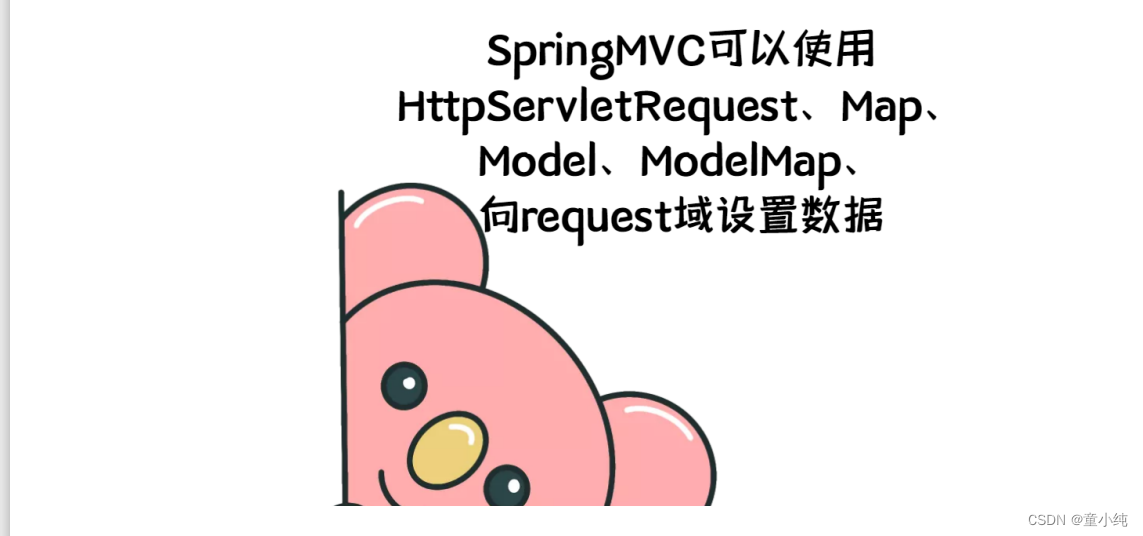
当控制器返回值为ModelAndView时我们可以向request域设置数 据,我们还有以下方法可以向request域设置数据:
使用原生的HttpServletRequest
@RequestMapping("/c2/hello3")
public String setRequestModel(HttpServletRequest request){
request.setAttribute("username","面涂学堂");
return "baizhan";
}使用Model、ModelMap
SpringMVC提供了Model接口和ModelMap类,控制器方法添加这 两个类型的参数,使用该参数设置数据,该数据就会存到request域中。
@RequestMapping("/c2/hello4")
public String setRequestModel2(Model model, ModelMap modelMap){
// 使用Model将数据存入request域
// model.addAttribute("username","辛苦学堂");
// 使用ModelMap将数据存入request域
modelMap.addAttribute("username","辛苦学堂");
return "baizhan";
}使用Map集合
Model接口底层就是一个Map集合,我们可以给控制器方法设置 Map类型的参数,向Map中添加键值对,数据也会存到request域 中。
@RequestMapping("/c2/hello5")
public String setRequestModel3(Map map){
map.put("username","辛苦学堂");
return "baizhan";
}SpringMVC处理响应_session域设置数据

Session作用域表示在当前会话中有效。在SpringMVC中对于
Session作用域传值,只能使用HttpSession对象来实现。
1、编写控制器方法
@RequestMapping("/c2/hello6") public String setSeesionModel(HttpSession session){ session.setAttribute("address","北京"); return "baizhan"; }2、编写jsp页面
<%@ page contentType="text/html;charset=UTF-8" language="java"%> <html> <head> <title>百战不败</title> </head> <body> <h1>你好!${requestScope.name}</h1> <h1>地址是!${sessionScope.address}</h1> </body> </html>
SpringMVC处理响应_context域设置数据

context作用域表示在整个应用范围都有效。在SpringMVC中对 context作用域传值,只能使用ServletContext对象来实现。但是该 对象不能直接注入到方法参数中,需要通过HttpSession对象获取。
1、编写控制器方法
@RequestMapping("/c2/hello7") public String setContextModel(HttpSession session){ ServletContext servletContext = session.getServletContext(); servletContext.setAttribute("age",10); return "baizhan"; }2、编写jsp页面
<%@ page contentType="text/html;charset=UTF-8" language="java"%> <html> <head> <title>百战不败</title> </head> <body> <h1>你好!${requestScope.name}</h1> <h1>地址是!${sessionScope.address}</h1> <h1>年纪是!${applicationScope.age}</h1> </body> </html>
SpringMVC处理响应_请求转发&重定向

之前的案例,我们发现request域中的值可以传到jsp页面中,也就 是通过视图解析器跳转到视图的底层是请求转发。
如果我们跳转时不想使用视图解析器,可以使用原生 HttpServletRequest进行请求转发或HttpServletResponse进行重定向:
@RequestMapping("/c2/hello8")
public void myForward1(HttpServletRequest request, HttpServletResponse response)
throws Exception{
request.setAttribute("name","辛苦学堂");
// 请求转发
// request.getRequestDispatcher("/c2/hello9").forward(request,response);
// 原生重定向
response.sendRedirect("/c2/hello9");
}
@RequestMapping("/c2/hello9")
public void myForward2(HttpServletRequest request){
System.out.println("hello");
System.out.println(request.getAttribute("name"));
}SpringMVC还提供了一种更简单的请求转发和重定向的写法:
@RequestMapping("/c2/hello10")
public String myForward3(HttpServletRequest request){
request.setAttribute("name","辛苦学堂");
// 请求转发
return "forward:/c2/hello9";
// 重定向
// return "redirect:/c2/hello9";
}SpringMVC通过注解来实现控制器的功能,接下来我们详细学习 SpringMVC的常用注解:
SpringMVC的常用注解:
SpringMVC注解_@Controller
作用:标记控制器,将控制器交给Spring容器管理。
位置:类上方
SpringMVC注解_@RequestMapping

作用:给控制器方法设置请求路径
位置:方法或类上方。用于类上,表示类中的所有控制器方法都是 以该地址作为父路径。
属性:
1、value/path:请求路径
2、method:指定请求方式
3、params:规定必须发送的请求参数
4、headers:规定请求必须包含的请求头
@Controller
@RequestMapping("/c3")
public class MyController3 {
/*
访问路径为 /c3/annotation1
支持post和get请求
请求时必须带有age参数
请求时必须带有User-agent请求头
*/
@RequestMapping(path = "/annotation1",method =
{RequestMethod.GET,RequestMethod.POST},params = {"age"},headers = {"User-agent"})
public String annotation1(String username){
System.out.println(username);
return "baizhan";
}
}SpringMVC注解_@RequestParam

作用:在控制器方法中获取请求参数
位置:方法参数前
属性:
1、name:指定请求参数名称
2、defaultValue: 为参数设置默认值
3、required:设置是否是必须要传入的参数
/*
定义请求的参数名为username,默认值为sxt,不是必须的参数
*/
@RequestMapping("/annotation2")
public String annotation2(@RequestParam(name = "username",defaultValue = "sxt",required =
false) String name){
System.out.println(name);
return "baizhan";
}
SpringMVC注解_@RequestHeader、@CookieValue

@RequestHeader
作用:在控制器方法中获取请求头数据
位置:方法参数前
@CookieValue
作用:在控制器方法中获取Cookie数据
位置:方法参数前
/*
获取User-Agent请求头
获取JSESSIONID的Cookie值
*/
@RequestMapping("/annotation3")
public String annotation3(@RequestHeader("User-Agent")
String userAgent, @CookieValue("JSESSIONID") String jSessionId){
System.out.println(userAgent);
System.out.println(jSessionId);
return "baizhan";
}SpringMVC注解_@SessionAttributes

作用:将Model模型中的数据存到session域中
位置:类上方
@Controller @RequestMapping("/c4") // 将模型中的name数据保存到session中 @SessionAttributes("name") public class MyController4 { @RequestMapping("/t1") public String t1(Model model){ // model中保存name数据 model.addAttribute("name","北京大乱斗"); return "baizhan"; } @RequestMapping("/t2") public String t2(HttpSession session){ // 从session中获取name数据 System.out.println(session.getAttribute("name")); return "baizhan"; } }
SpringMVC注解_@ModelAttribute

作用1:设置指定方法在控制器其他方法前执行
位置:方法上方
@Controller @RequestMapping("/c5") public class MyController5 { @ModelAttribute public void before(){ System.out.println("前置方法"); } @RequestMapping("/t1") public String t1(){ System.out.println("t1"); return "baizhan"; } }作用2:从Model模型中获取数据给参数赋值
位置:方法参数前
@Controller @RequestMapping("/c6") public class MyController6 { // 前置方法向Model中设置数据 @ModelAttribute public void before(Model model){ model.addAttribute("name","辛苦学堂"); } // 该参数不是从请求中获取,而是从Model中获取 @RequestMapping("/t1") public String t1(@ModelAttribute("name") String name){ System.out.println(name); return "baizhan"; } }
SpringMVC注解_RESTful风格支持

RESTful风格介绍
RESTful风格是一种URL路径的设计风格。在RESTful风格的URL路 径中,网络上的任意数据都可以看成一个资源,它可以是一段文 本、一张图片,也可以是一个Java对象。而每个资源都会占据一个 网络路径,无论对该资源进行增删改查,访问的路径是一致的。
传统URL:
查找id为1的学生: http://localhost:8080/student/findById?id=30
删除id为1的学生: http://localhost:8080/student/deleteById?id=30
RESTful风格URL:
查找id为30的学生: http://localhost:8080/student/30
删除id为30的学生: http://localhost:8080/student/30
那么如何区分对该资源是哪一种操作?通过请求方式不同,判断进 行的是什么操作。
之前我们学过两种请求方式,GET请求和POST请求,而访问 RESTful风格的URL一共有四种请求方式:
1、GET请求:查询操作
2、POST请求:新增操作
3、DELETE请求:删除操作
4、PUT请求:修改操作
RESTful风格URL:
查找id为30的学生: http://localhost:8080/student/30 GET方式请求
删除id为30的学生: http://localhost:8080/student/30 DELETE方式请求
RESTful风格的优点:
结构清晰、符合标准、易于理解、扩展方便。
Postman使用
默认情况下浏览器是无法发送DELETE请求和PUT请求的,我们可以 使用Postman工具发送这些请求。
1、双击安装包安装Postman
2、点击new-collection创建请求集合
3、添加请求
4、保存请求到集合,以后可以随时发送该请求
@PathVariable

作用:在RESTful风格的URL中获取占位符的值
位置:方法参数前
属性:
1、value:获取哪个占位符的值作为参数值,如果占位符和参数名相同,可以省略该属性。
@Controller @RequestMapping("/student") // 模拟学生的增删改查控制器 public class StudentController { // 路径中的{id}表示占位符,最后会封装到方法的参数中使用 // 删除学生 @RequestMapping(value = "/{id}",method = RequestMethod.DELETE) public String deleteStudent(@PathVariable("id") int id){ System.out.println("删除id为"+id+"的学生"); return "baizhan"; } // 如果占位符和参数名相同,可以省略 @PathVariable的value属性 // 根据id查询学生 @RequestMapping(value = "/{id}",method = RequestMethod.GET) public String findStudentById(@PathVariable int id){ System.out.println(id); System.out.println("根据id查询学生"); return "baizhan"; } // 新增学生 @RequestMapping(value = "/{id}",method = RequestMethod.POST) public String addStudent(@PathVariable int id, Student student){ System.out.println(id); System.out.println(student); System.out.println("新增学生"); return "baizhan"; } // 修改学生 @RequestMapping(value = "/{id}",method = RequestMethod.PUT) public String updateStudent(@PathVariable int id, Student student){ System.out.println(id); System.out.println(student); System.out.println("修改学生"); return "baizhan"; } }访问方式:
新增学生:POST http://localhost:8080/student/1?name=辛苦学堂&sex=男
修改学生:PUT http://localhost:8080/student/1?name=辛苦学堂&sex=男
删除学生:DELETE http://localhost:8080/student/1
查询学生:GET http://localhost:8080/student/1
@PostMapping、@GetMapping、@PutMapping、 @DeleteMapping
作用:简化设置请求方式的@RequestMapping写法
位置:方法上方。
@Controller @RequestMapping("/student") public class StudentController { // 删除学生 @DeleteMapping("/{id}") public String deleteStudent(@PathVariable("id") int id){ System.out.println("删除id为"+id+"的学生"); return "baizhan"; } // 根据id查询学生 @GetMapping("/{id}") public String findStudentById(@PathVariable int id){ System.out.println(id); System.out.println("根据id查询学生"); return "baizhan"; } // 新增学生 @PostMapping("/{id}") public String addStudent(@PathVariable int id, Student student){ System.out.println(id); System.out.println(student); System.out.println("新增学生"); return "baizhan"; } // 修改学生 @PutMapping("/{id}") public String updateStudent(@PathVariable int id, Student student){ System.out.println(id); System.out.println(student); System.out.println("修改学生"); return "baizhan"; } }
HiddentHttpMethodFilter

由于浏览器form表单只支持GET与POST请求,而DELETE、PUT请 求并不支持,SpringMVC有一个过滤器,可以将浏览器的POST请求 改为指定的请求方式,发送给的控制器方法。
用法如下:
1、在web.xml中配置过滤器
<!-- 请求方式过滤器 --> <filter> <filter-name>httpMethodFilter</filter-name> <filter-class>org.springframework.web.filter.HiddenHttpMethodFilter</filter-class> </filter> <filter-mapping> <filter-name>httpMethodFilter</filter-name> <url-pattern>/*</url-pattern> </filter-mapping>2、编写控制器方法
@Controller @RequestMapping("/c7") public class MyController7 { @DeleteMapping("/delete") public String testDelete(){ System.out.println("删除方法"); return "baizhan"; } @PutMapping("/put") public String testPut(){ System.out.println("修改方法"); return "baizhan"; } }3、在jsp中编写表单
<%@ page contentType="text/html;charset=UTF-8" language="java" %> <html> <head> <title>DELETE、PUT提交</title> </head> <body> <!-- 删除 --> <%-- 提交DELETE、PUT请求,表单必须提交方式为post --%> <%-- 表单中有一个隐藏域,name值为 _method,value值为提交方式 --%> <form action="/c7/delete" method="post"> <input type="hidden" name="_method" value="DELETE"> <input type="submit" value="删除"> </form> <hr/> <!-- 修改 --> <form action="/c7/put" method="post"> <input type="hidden" name="_method" value="PUT"> <input type="submit" value="修改"> </form> </body> </html>
SpringMVC注解_@ResponseBody

作用:方法返回的对象转换为JSON格式,并将JSON数据直接写入 到输出流中,使用此注解后不会再经过视图解析器。使用该注解可 以处理Ajax请求。
位置:方法上方或方法返回值前
1、编写jsp页面,发送ajax请求
<%@ page contentType="text/html;charset=UTF-8" language="java" %> <html> <head> <title>ajax请求</title> <script src="/js/jquery-2.1.1.min.js"></script> <script> $(function () {$("#btn").click(function () { var name = $("#name").val(); var sex = $("#sex").val(); $.get("/c8/addStudent", {"name":name,"sex":sex},function (data){ console.log(data); }); }); }); </script> </head> <body> 姓名:<input id="name"/><br/> 性别:<input id="sex"/><br/> <input type="button" value="提交" id="btn"/> </body> </html>2、由于jsp页面中引入jQuery的js文件,而SpringMVC会拦截所有 资源,造成jquery.js失效,需要在SpringMVC核心配置文件中放 行静态资源。
<!-- 放行静态资源 --> <mvc:default-servlet-handler />3、编写结果实体类,该实体类会封装一个请求的结果
// 请求的结果对象 public class Result { private boolean flag; // 请求是否成功 private String message; // 请求提示信息 // 省略getter/setter/构造方法 }4、编写控制器
@PostMapping("/addStudent") @ResponseBody public Result addStudent(String name, String sex) { // 输出接受到的参数,模拟添加学生 System.out.println(name+":"+sex); // 返回添加结果 Result result = new Result(true, "添加学生成功!"); return result; }5、SpringMVC会将Result对象转为JSON格式写入输出流,而 SpringMVC默认使用的JSON转换器是jackson,需要在pom中添 加jackson依赖。
<!-- jackson --> <dependency> <groupId>com.fasterxml.jackson.core</groupId> <artifactId>jackson-core</artifactId> <version>2.9.0</version> </dependency> <dependency> <groupId>com.fasterxml.jackson.core</groupId> <artifactId>jacksondatabind</artifactId> <version>2.9.0</version> </dependency> <dependency> <groupId>com.fasterxml.jackson.core</groupId> <artifactId>jacksonannotations</artifactId> <version>2.9.0</version> </dependency>
SpringMVC注解_@RestController
如果一个控制器类下的所有控制器方法都返回JSON格式数据且不进 行跳转,可以使用@RestController代替@Controller,此时每个方 法上的@ResponseBody都可以省略。
@RestController
@RequestMapping("/c8")
public class MyController8 {
@PostMapping("/addStudent")
public Result addStudent(String name, String sex) {
// 输出接受到的参数,模拟添加学生
System.out.println(name+":"+sex);
// 返回结果
Result result = new Result(true, "添加学生成功!");
return result;
}
}
静态资源映射

当在DispatcherServlet的<url-pattern> 中配置拦截 “/” 时,除了jsp文件 不会拦截以外,其他所有的请求都会经过前端控制器进行匹配。此 时静态资源例如css、js、jpg等就会被前端控制器拦截,导致不能访 问,出现404问题。想要正常映射静态资源共有三种方案:
配置静态资源筛查器
在SpringMVC的配置文件中配置 后,会在Spring容器中创建一个资源检查器,它对进入 DispatcherServlet的URL进行筛查,如果不是静态资源,才由 DispatcherServlet处理。
修改SpringMVC核心配置文件:
<mvc:default-servlet-handler/>配置静态资源映射器
SpringMVC模块提供了静态资源映射器组件,通过 标签 配置静态资源映射器,配置后的路径不会由DispatcherServlet处 理。
修改SpringMVC核心配置文件:
<!--配置静态资源映射器--> <!-- mapping:配置请求的URL location:资源路径--> <mvc:resources mapping="/img/" location="/img/"/><mvc:resources mapping="/js/" location="/js/"/>配置默认Servlet处理静态资源
在web.xml可以配置默认Servlet处理静态资源,该Servlet由tomcat 提供,它会直接访问静态资源不进行其他操作。这样就避免了使用 DispatcherServlet对静态资源的拦截:
修改web.xml:
<servlet-mapping> <servlet-name>default</servlet-name> <url-pattern>*.jpg</url-pattern> </servlet-mapping> <servlet-mapping> <servlet-name>default</servlet-name> <url-pattern>*.css</url-pattern> </servlet-mapping> <servlet-mapping> <servlet-name>default</servlet-name> <url-pattern>*.js</url-pattern> </servlet-mapping> <servlet-mapping> <servlet-name>default</servlet-name> <url-pattern>*.png</url-pattern> </servlet-mapping>
SpringMVC注解_@RequestBody
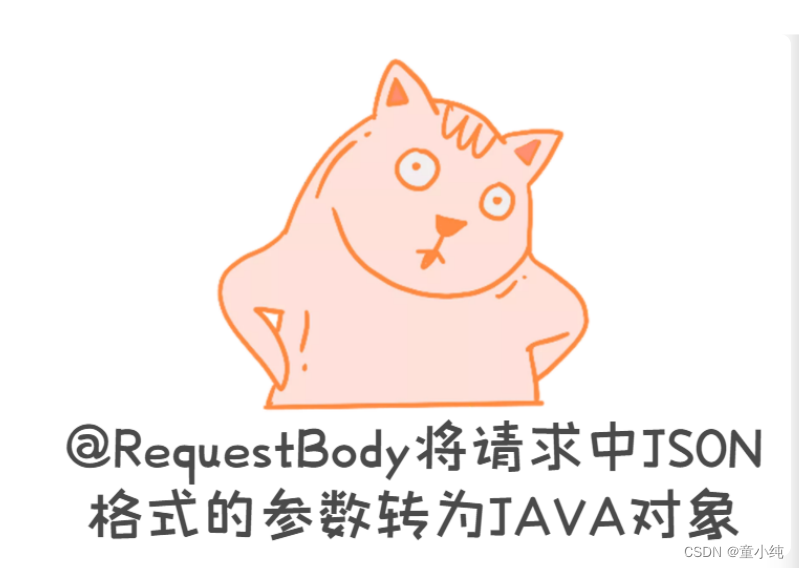
作用:将请求中JSON格式的参数转为JAVA对象
位置:写在方法参数前
1、AJAX请求发送JSON格式的参数
<%@ page contentType="text/html;charset=UTF-8" language="java" %> <html> <head> <title>ajax请求</title> <script src="/js/jquery2.1.1.min.js"></script> <script> $(function (){ $("#btn").click(function(){ var name=$("#name").val(); var sex=$("#sex").val(); var param = JSON.stringify({"name":name,"sex":sex}); $.ajax({ url:"/c8/addStudent2", contentType:"application/json", type:"post",data:param,success:function(data){ console.log(data); } }) }) }) </script> </head> <br> 姓名:<input id="name"><br /> 性别:<input id="sex"><br /> <input type="button" value="提交"id="btn"> </body> </html>2、编写控制器
@PostMapping("/addStudent2") @ResponseBody public Result addStudent2(@RequestBody Student student) { System.out.println(student); // 返回添加结果 Result result = new Result(true, "添加学生成功!"); return result; }
SpringMVC文件上传_原生方式上传
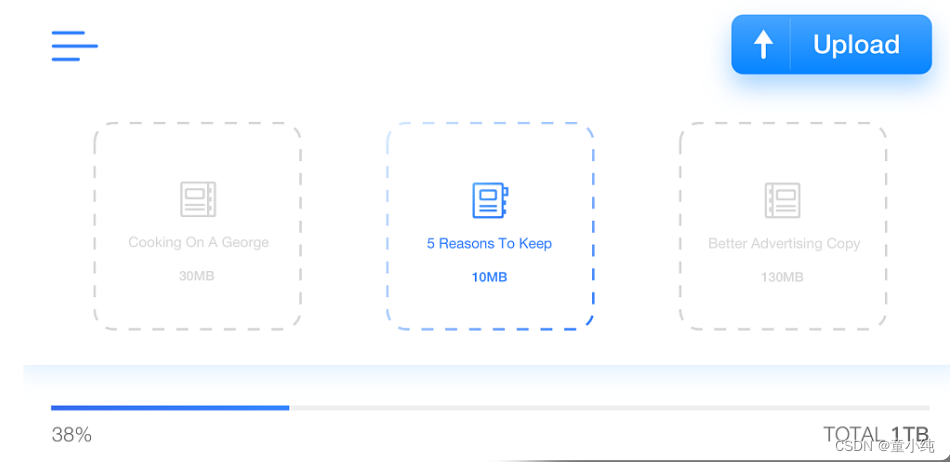
上传是Web工程中很常见的功能,SpringMVC框架简化了文件上传 的代码,我们首先使用JAVAEE原生方式上传文件:
1、创建新的SpringMVC项目,在web.xml中将项目从2.3改为3.1, 即可默认开启el表达式
<web-app xmlns:xsi="http://www.w3.org/2001/XMLSchema-instance" xmlns="http://xmlns.jcp.org/xml/ns/javaee" xsi:schemaLocation="http://xmlns.jcp.org/xml/ns/javaee http://xmlns.jcp.org/xml/ns/javaee/webapp_3_1.xsd" id="WebApp_ID" version="3.1">2、编写上传表单
<%@ page contentType="text/html;charset=UTF-8" language="java" %> <html> <head> <title>上传</title> </head> <body> <h3>文件上传</h3> <%-- 上传表单的提交方式必须是post --%> <%-- enctype属性为multipart/formdata,意思是不对表单数据进行编码 --%> <form action="/fileUpload" method="post" enctype="multipart/formdata"> <%-- 文件选择控件,类型是file,必须要有name属性--%> 选择文件:<input type="file"name="upload"/> <input type="submit" value="上传"/> </form> </body> </html>3、接收请求体数据:
@RequestMapping("/fileUpload") public String upload(HttpServletRequest request) throws Exception { // 获取输入流 ServletInputStream is = request.getInputStream(); // 从输入流获取请求体数据 int i = 0; while ((i=is.read())!=-1){ System.out.println((char)i); } return "index"; }
接下来需要分析请求体中的文件项,并将数据写入磁盘,此时需要 借助文件上传工具
1、引入文件上传依赖:
<!-- 文件上传 --> <dependency> <groupId>commons-fileupload</groupId> <artifactId>commonsfileupload</artifactId> <version>1.3.1</version> </dependency> <dependency> <groupId>commons-io</groupId> <artifactId>commons-io</artifactId> <version>2.4</version> </dependency>2、编写控制器接收上传请求,控制器进行三步操作:
2.1 创建文件夹,存放上传文件。
2.2 分析请求体,找到上传文件数据。
2.3 将文件数据写入文件夹。
@RequestMapping("/fileUpload") public String upload(HttpServletRequest request) throws Exception { // 创建文件夹,存放上传文件 // 1.设置上传文件夹的真实路径 String realPath = request.getSession().getServletContext().getRealPath("/upload"); // 2.判断该目录是否存在,如果不存在,创建该目录 File file = new File(realPath); if(!file.exists()){ file.mkdirs(); } // 分析请求体,找到上传文件数据 // 1.创建磁盘文件工厂 DiskFileItemFactory factory = new DiskFileItemFactory(); // 2.创建上传数据分析器对象 ServletFileUpload servletFileUpload = new ServletFileUpload(factory); // 3.利用分析器对象解析请求体,返回所有数据项 List<FileItem> fileItems = servletFileUpload.parseRequest(request); // 4.遍历所有数据,找到文件项(非表单项) for (FileItem fileItem:fileItems){ if(!fileItem.isFormField()){ // 将文件数据写入文件夹 // 1.获取文件名 String name = fileItem.getName(); // 2.将文件写入磁盘 fileItem.write(new File(file,name)); // 3.删除内存中的临时文件 fileItem.delete(); } } return "index"; }
SpringMVC文件上传_SpringMVC方式上传
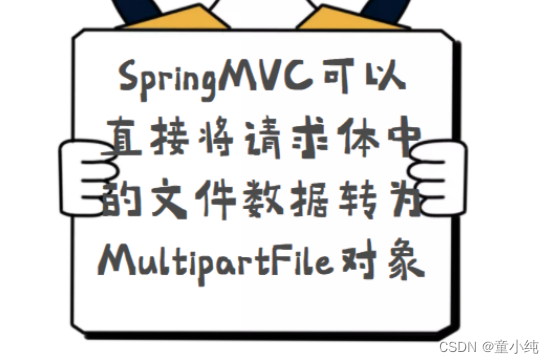
SpringMVC使用框架提供的文件解析器对象,可以直接将请求体中 的文件数据转为MultipartFile对象,从而省略原生上传中分析请求体的步骤。
1、在SpringMVC核心配置文件配置文件解析器
<!-- 文件解析器对象,id名称必须是 multipartResolver --> <bean id="multipartResolver" class="org.springframework.web.multipart.commons.CommonsMultipartResolver"> <!-- 支持一次上传文件的总容量。单位:字节 100M = 100*1024*1024--> <property name="maxUploadSize" value="104857600"/> <!-- 文件名的编码方式--> <property name="defaultEncoding" value="utf-8"/> </bean>2、创建JSP表单
<form action="/fileUpload2" method="post" enctype="multipart/form-data"> <input type="file" name="file"/> <input type="submit" value="上传"/> </form>3、编写控制器接收上传请求
// MultipartFile参数名必须和JSP文件空间的name 属性一致 @RequestMapping("/fileUpload2") public String upload2(MultipartFile file,HttpServletRequest request) throws IOException { // 创建文件夹,存放上传文件 String realPath = request.getSession().getServletContext().getRealPath("/upload"); File dir = new File(realPath); if(!dir.exists()){ dir.mkdirs(); } // 将上传的数据写到文件夹的文件中 // 1.拿到上传的文件名 String filename = file.getOriginalFilename(); filename = UUID.randomUUID()+"_"+filename; // 2.创建空文件 File newFile = new File(dir,filename); // 3.将数据写入空文件中 file.transferTo(newFile); return "index"; }
SpringMVC文件上传_上传多文件
SpringMVC支持一次性上传多个文件,写法如下:
1、创建JSP表单
<form action="/fileUpload3" method="post" enctype="multipart/form-data"> 用户名:<input name="username"/> 文件1:<input type="file" name="files"/> 文件2:<input type="file" name="files"/> <input type="submit" value="上传"/> </form>2、编写控制器接收上传请求
// 处理多文件上传,参数类型为MultipartFile数组,参数名和JSP文件控件的name属性一致 @RequestMapping("/fileUpload3") public String upload3(MultipartFile files[],String username,HttpServletRequest request) throws Exception { System.out.println(username); //1.设置上传文件保存的文件夹 String realPath =request.getSession().getServletContext().getRealPath("/upload"); File dir = new File(realPath); if (!dir.exists()){ dir.mkdirs(); } //2.遍历数组,将上传文件保存到文件夹 for(MultipartFile file:files){ String filename =file.getOriginalFilename(); filename =UUID.randomUUID()+"_"+filename; File newFile = new File(dir,filename); file.transferTo(newFile); } return "index"; }
SpringMVC文件上传_异步上传
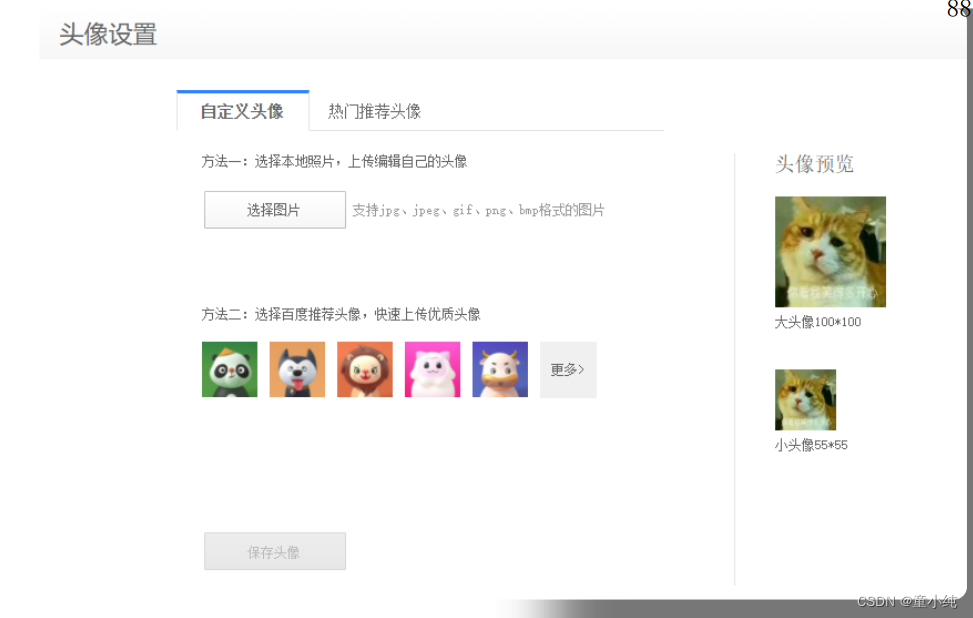
之前的上传方案,在上传成功后都会跳转页面。而在实际开发中, 很多情况下上传后不进行跳转,而是进行页面的局部刷新,比如: 上传头像成功后将头像显示在网页中。这时候就需要使用异步文件上传。
1、编写JSP页面,引入jQuery和jQuery表单上传工具
jquery.form.js
<%@ page contentType="text/html;charset=UTF-8" language="java" %> <html> <head> <title>上传</title> <script src="/js/jquery-2.1.1.min.js"></script> <script src="/js/jquery.form.js"> </script> </head> <body> <h3>文件上传</h3> <form id="ajaxForm" enctype="multipart/form-data" > <input type="file" name="file"/> <%-- 按钮类型不能是submit,否则会刷新页面 --%> <input type="button" value="上传头像"id="btn"/> </form> <%-- 上传头像后展示的位置 --%> <img src="/" width="100" id="img"> <script> $(function () { $("#btn").click(function () { // 异步提交表单 $("#ajaxForm").ajaxSubmit({ url:"/fileUpload4", type:"post", success:function (data) { $("#img").attr("src",data); } }) }) }) </script> </body> </html>2、编写控制器接收异步上传请求
@RequestMapping("/fileUpload4") //不进行页面跳转 @ResponseBody public String upload3(HttpServletRequest request, MultipartFile file) throws Exception { // 创建文件夹,存放上传文件。 String realPath = request.getSession().getServletContext().getRealPath("/upload"); File dir = new File(realPath); if (!dir.exists()){ dir.mkdirs(); } // 拿到上传文件名 String filename = file.getOriginalFilename(); filename = UUID.randomUUID()+"_"+filename; // 创建空文件 File newFile = new File(dir, filename); // 将上传的文件写到空文件中 file.transferTo(newFile); // 返回文件的路径 return "/upload/"+filename; }
SpringMVC文件上传_跨服务器上传

由于文件占据磁盘空间较大,在实际开发中往往会将文件上传到其 他服务器中,此时需要使用跨服务器上传文件。
1、解压tomcat作为图片服务器,在tomcat的webapps下创建 upload目录作为文件上传目录。
2、修改tomcat的 conf/web.xml 文件,支持跨服上传。
<servlet> <init-param> <param-name>readonly</param-name> <param-value>false</param-value> </init-param> </servlet>3、修改tomcat的 conf/server.xml 文件,修改tomcat端口,修改完开启 tomcat服务器
<Connector port="8081" protocol="HTTP/1.1" connectionTimeout="20000" redirectPort="8443" />4、编写JSP上传表单
<%@ page contentType="text/html;charset=UTF-8" language="java" %> <html> <head> <title>上传</title> <script src="/js/jquery2.1.1.min.js"></script> <script src="/js/jquery.form.js"></script> </head> <body> <h3>文件上传</h3> <form id="ajaxForm" enctype="multipart/form-data" > <input type="file" name="file"/> <input type="button" value="上传头像" id="btn"/> </form> <img src="/" width="100" id="img"> <script> $(function () { $("#btn").click(function() { $("#ajaxForm").ajaxSubmit({url:"/fileUpload5", type:"post",success:function(data) { $("#img").attr("src",data); } }) }) }) </script> </body> </html>5、添加跨服上传依赖
<!-- 跨服上传 --> <dependency> <groupId>com.sun.jersey</groupId> <artifactId>jersey-core</artifactId> <version>1.18.1</version> </dependency> <dependency> <groupId>com.sun.jersey</groupId> <artifactId>jersey-client</artifactId> <version>1.18.1</version> </dependency>6、创建控制器方法,该方法在接受到上传请求后将文件保存到其他服务器上。
@RequestMapping("/fileUpload5") @ResponseBody public String upload4(HttpServletRequest request, MultipartFile file) throws Exception { // 设置跨服上传的服务器路径 String path = "http://localhost:8081/upload/"; // 获取上传的文件名 String filename = file.getOriginalFilename(); filename = UUID.randomUUID()+"_"+filename; // 跨服上传: // 1.创建客户端对象 Client client = Client.create(); // 2.使用客户端对象连接图片服务器 WebResource resource = client.resource(path + filename); //3.传输数据 resource.put(file.getBytes()); return path+filename; }
SpringMVC文件上传_文件下载
将文件上传到服务器后,有时我们需要让用户下载上传的文件,接下来我们编写文件下载功能:
查询所有可下载的文件
1、编写控制器方法,查询所有可下载的文件,并跳转到下载页面
// 查询可下载的文件 @RequestMapping("/showFiles") public String showFileDown(HttpServletRequest request, Model model){ //1.获取下载文件路径集合。注:跨服务器上传中,网络路径无法获取文件列表。 String path = request.getSession().getServletContext().getRealPath("/upload"); File file = new File(path); String[] files = file.list(); //2.将路径放入模型中,跳转到JSP页面 model.addAttribute("files",files); return "download"; }2、添加JSTL依赖
<!-- JSTL --> <dependency> <groupId>org.apache.taglibs</groupId> <artifactId>taglibs-standard-spec</artifactId> <version>1.2.5</version> </dependency> <dependency> <groupId>org.apache.taglibs</groupId> <artifactId>taglibs-standard-impl</artifactId> <version>1.2.5</version> </dependency>3、编写下载页面
<%@ page contentType="text/html;charset=UTF-8" language="java" %> <%@ taglib prefix="c" uri="http://java.sun.com/jsp/jstl/core" %> <html> <head> <title>下载</title> </head> <body> <h3>文件下载</h3> <%-- 遍历文件集合 --%> <c:forEach items="${files}" var="file"> <a href="/download?fileName=${file}">${file}</a><br/> </c:forEach> </body> </html>
编写下载控制器
// 文件下载
@RequestMapping("/download")
public void fileDown(HttpServletRequest request, HttpServletResponse response,String fileName) throws IOException {
// 设置响应头
response.setHeader("ContentDisposition","attachment;filename="+fileName
);
// 获取文件路径
String path = request.getSession().getServletContext().getRealPath("/upload");
File file = new File(path,fileName);
// 获取字节输出流
ServletOutputStream os = response.getOutputStream();
// 使用输出流写出文件
os.write(FileUtils.readFileToByteArray(file));
os.flush();
os.close();
}SpringMVC异常处理_单个控制器异常处理
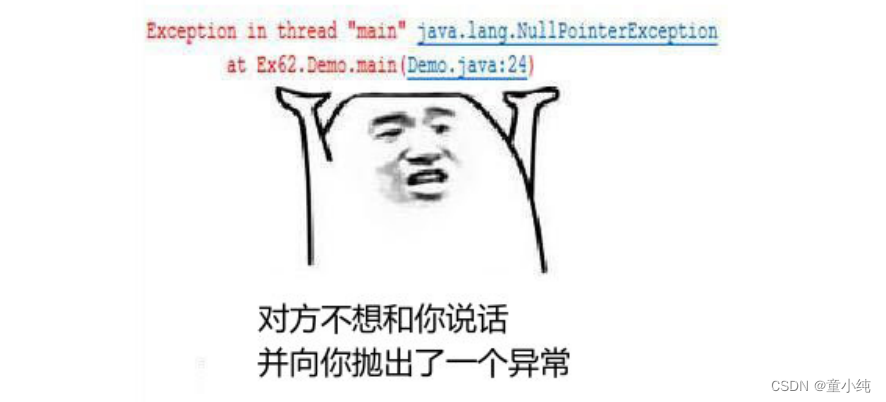
在系统当中, Dao、Service、Controller层代码出现都可能抛出异 常。如果哪里产生异常就在哪里处理,则会降低开发效率。所以一 般情况下我们会让异常向上抛出,最终到达DispatcherServlet中, 此时SpringMVC提供了异常处理器进行异常处理,这样可以提高开发效率。

处理单个Controller的异常:
@Controller
public class MyController {
@RequestMapping("/t1")
public String t1(){
String str = null;
// str.length();
// int flag = 1/0;
int[] arr = new int[1];
arr[2] = 10;
return "index";
}
/**
* 异常处理方法
* @param ex 异常对象
* @param model 模型对象
* @return
*/
// 添加@ExceptionHandler,表示该方法是处理异常的方法,属性为处理的异常类
@ExceptionHandler({java.lang.NullPointerException.class,java.lang.ArithmeticException.c
lass})
public String exceptionHandle1(Exception ex, Model model){
// 向模型中添加异常对象
model.addAttribute("msg",ex);
// 跳转到异常页面
return "error";
}
// 方法一不能处理的异常交给方法二处理
@ExceptionHandler(java.lang.Exception.class)
public String exceptionHandle2(Exception ex, Model model){
model.addAttribute("msg",ex);
return "error2";
}
}异常页面error.jsp
<%@ page contentType="text/html;charset=UTF8" language="java" %>
<html>
<head>
<title>出错了!</title>
</head>
<body>
<h3>ERROR 发生异常!${msg}</h3>
</body>
</html>异常页面error2.jsp
<%@ page contentType="text/html;charset=UTF8" language="java" %>
<html>
<head>
<title>出错了!</title>
</head>
<body>
<h3>ERROR2 发生严重异常!${msg}</h3>
</body>
</html>SpringMVC异常处理_全局异常处理

在控制器中定义异常处理方法只能处理该控制器类的异常,要想处 理所有控制器的异常,需要定义全局异常处理类。
1、编写另一个有异常的控制器类
@Controller public class MyController2 { @RequestMapping("/t2") public String t2(){ int[] arr = new int[1]; arr[2] = 10; return "index"; } }2、编写全局异常处理器类
// 全局异常处理器类,需要添加@ControllerAdvice @ControllerAdvice public class GlobalExceptionHandler { /*** 异常处理方法 * * @param ex 异常对象 * @param model 模型对象 * @return */ // 添加@ExceptionHandler,表示该方法是处 理异常的方法,属性为处理的异常类 @ExceptionHandler({java.lang.NullPointerException.class,java.lang.ArithmeticException.class}) public String exceptionHandle1(Exception ex, Model model) { // 向模型中添加异常对象 model.addAttribute("msg", ex); // 跳转到异常页面 return "error"; } // 方法一不能处理的异常交给方法二处理 @ExceptionHandler(java.lang.Exception.class) public String exceptionHandle2(Exception ex, Model model) { model.addAttribute("msg", ex); return "error2"; } }
SpringMVC异常处理_自定义异常处理器

以上方式都是使用的SpringMVC自带的异常处理器进行异常处理, 我们还可以自定义异常处理器处理异常:
// 自定义异常处理器实现HandlerExceptionResolver接口,并放入Spring容器中
@Component
public class MyExceptionHandler implements HandlerExceptionResolver {
@Override
public ModelAndView resolveException(HttpServletRequest httpServletRequest, HttpServletResponse httpServletResponse, Object o, Exception e)
{
ModelAndView modelAndView = new ModelAndView();
if (e instanceof NullPointerException) {
modelAndView.setViewName("error");
} else {
modelAndView.setViewName("error2");
}
modelAndView.addObject("msg", e);
return modelAndView;
}
}SpringMVC拦截器_拦截器简介

SpringMVC的拦截器(Interceptor)也是AOP思想的一种实现方 式。它与Servlet的过滤器(Filter)功能类似,主要用于拦截用户的 请求并做相应的处理,通常应用在权限验证、记录请求信息的日 志、判断用户是否登录等功能上。
拦截器和过滤器的区别
拦截器是SpringMVC组件,而过滤器是Servlet组件。
拦截器不依赖Web容器,过滤器依赖Web容器。
拦截器只能对控制器请求起作用,而过滤器则可以对所有的请求起作用。
拦截器可以直接获取IOC容器中的对象,而过滤器就不太方便获取。
SpringMVC拦截器_拦截器使用
接下来我们使用SpringMVC拦截器
1、使用maven创建SprinMVC的web项目
2、创建控制器方法
@RequestMapping("/m1") public String m1(){ System.out.println("控制器方法"); return "result"; }3、创建拦截器类,该类实现HandlerInterceptor接口,需要重写三个方法:
3.1 preHandle:请求到达Controller前执行的方法,返回值为true通过拦截器,返回值为false被 拦截器拦截。
3.2 postHandle:跳转到JSP前执行的方法
3.3 afterCompletion:跳转到JSP后执行的方法
// 拦截器类 public class MyInterceptor implements HandlerInterceptor { // 请求到达Controller前执行 @Override public boolean preHandle(HttpServletRequest request, HttpServletResponse response, Object handler) { System.out.println("请求到达 Controller前"); // 如果return false则无法到达 Controller return true; } // 跳转到JSP前执行,此时可以向Request域添加数据 @Override public void postHandle(HttpServletRequest request, HttpServletResponse response, Object handler, ModelAndView modelAndView) { System.out.println("跳转到JSP前"); request.setAttribute("name","百战不败"); } // 跳转到JSP后执行,此时已经不能向Request域添加数据 @Override public void afterCompletion(HttpServletRequest request, HttpServletResponse response, Object handler, Exception ex) { System.out.println("跳转到JSP后"); request.setAttribute("age",10); } }4、编写JSP页面
<%@ page contentType="text/html;charset=UTF-8" language="java" %> <html> <head> <title>结果</title> </head> <body> <h3>name:${requestScope.name}</h3> <h3>age:${requestScope.age}</h3> </body> </html>5、在SpringMVC核心配置文件中配置拦截器
<!-- 配置拦截器--> <mvc:interceptors> <mvc:interceptor> <!-- 配置拦截器的作用路径--> <mvc:mapping path="/**"/> <!-- 拦截器对象 --> <bean class="com.itbaizhan.interceptor.MyInterceptor"/> </mvc:interceptor> </mvc:interceptors>
SpringMVC拦截器_全局拦截器
全局拦截器可以拦截所有控制器处理的URL,作用等于/**,配置方 式如下:
<!-- 配置拦截器 -->
<mvc:interceptors>
<!-- 全局拦截器 -->
<bean class="com.itbaizhan.interceptor.MyInterceptor"></bean>
</mvc:interceptors>SpringMVC拦截器_拦截器链与执行顺序
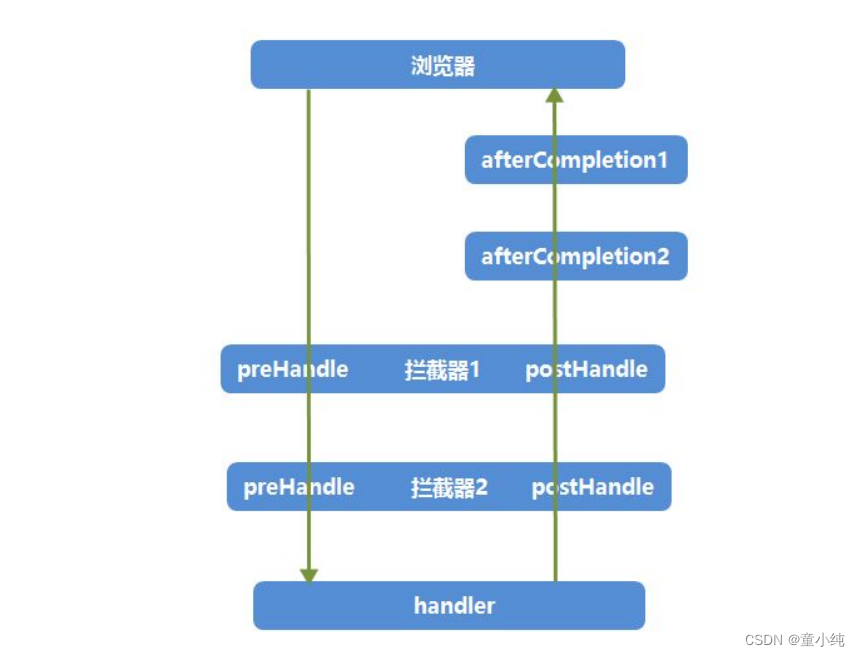
如果一个URL能够被多个拦截器所拦截,全局拦截器最先执行,其 他拦截器根据配置文件中配置的从上到下执行,接下来我们再配置 一个拦截器:
1、编写拦截器类
public class MyInterceptor2 implements HandlerInterceptor { @Override public boolean preHandle(HttpServletRequest request, HttpServletResponse response,Object handler) { System.out.println("拦截器2:请求到达Controller前"); return true; } @Override public void postHandle(HttpServletRequest request, HttpServletResponse response,Object handler, ModelAndView modelAndView) { System.out.println("拦截器2:跳转到JSP前"); } @Override public void afterCompletion(HttpServletRequest request, HttpServletResponse response,Object handler, Exception ex) { System.out.println("拦截器2:跳转到JSP后"); } }2、配置拦截器链
<!-- 配置拦截器 --> <mvc:interceptors> <!-- 拦截器1 --> <mvc:interceptor> <mvc:mapping path="/**"/> <bean class="com.itbaizhan.interceptor.MyInterceptor"/> </mvc:interceptor> <!-- 拦截器2 --> <mvc:interceptor> <mvc:mapping path="/**"/> <bean class="com.itbaizhan.interceptor.MyInterceptor2"/> </mvc:interceptor> </mvc:interceptors>
SpringMVC拦截器_拦截器过滤敏感词案例

接下来我们编写一个拦截器案例,需求如下: 在系统中,我们需要将所有响应中的一些敏感词替换为 *** ,此时可以使用拦截器达到要求:
1、编写控制器方法
@RequestMapping("/m2") public String m2(Model model){ model.addAttribute("name","大笨蛋"); return "result"; }2、编写敏感词拦截器
// 敏感词拦截器 public class SensitiveWordInterceptor implements HandlerInterceptor { @Override public boolean preHandle(HttpServletRequest request, HttpServletResponse response, Object handler) { return true; } @Override
// 敏感词拦截器 public class SensitiveWordInterceptor implements HandlerInterceptor { @Override public boolean preHandle(HttpServletRequest request, HttpServletResponse response, Object handler) { return true; } @Override public void postHandle(HttpServletRequest request,HttpServletResponse response, Object handler, ModelAndView modelAndView) { // 敏感词列表 String[] sensitiveWords = {"坏人","暴力","笨蛋"}; // 获取model中所有数据 Map<String, Object> model = modelAndView.getModel(); Set<Map.Entry<String, Object>> entries = model.entrySet(); // 遍历model for (Map.Entry<String, Object> entry : entries) { String key = entry.getKey(); String value = entry.getValue().toString(); // 将model值和敏感词列表遍历比对 for (String sensitiveWord : sensitiveWords) { // 如果model值包含敏感词,则替换 if(value.contains(sensitiveWord)){ String newStr = value.replaceAll(sensitiveWord, "***"); model.put(key,newStr); } } } } }3、配置拦截器
<!-- 配置拦截器--> <mvc:interceptors> <!-- 敏感词拦截器 --> <mvc:interceptor> <mvc:mapping path="/**"/> <bean class="com.itbaizhan.interceptor.SensitiveWordInterceptor"></bean> </mvc:interceptor> </mvc:interceptors>
SpringMVC跨域请求_同源策略

同源策略是浏览器的一个安全功能。同源,指的是两个URL的协 议,域名,端口相同。浏览器出于安全方面的考虑,不同源的客户 端脚本在没有明确授权的情况下,不能读写对方资源。
哪些不受同源策略限制:
最容易收到同源策略影响的就是Ajax请求。
SpringMVC跨域请求_跨域请求

当请求URL的协议、域名、端口三者中任意一个与当前页面URL不 同时即为跨域。浏览器执行JavaScript脚本时,会检查当前请求是否 同源,如果不是同源资源,就不会被执行。
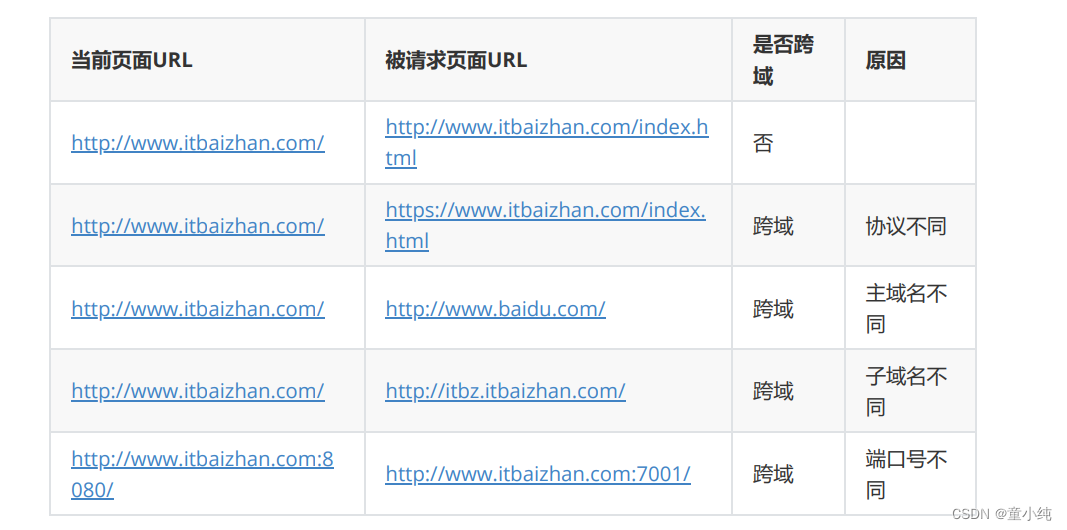
比如:
1、编写控制器方法
@RequestMapping("/m3") @ResponseBody public String m3(){ System.out.println("测试跨域请求"); return "success"; }2、编写JSP页面,发送异步请求
<%@ page contentType="text/html;charset=UTF-8" language="java" %> <html> <head> <title>跨域请求</title> <script src="/js/jquery2.1.1.min.js"></script> <script> $(function (){ $("#btn").click(function() { //$.get("http://localhost:8080/m3",function(data) { // console.log(data); // }) $.get("http://127.0.0.1:8080/m3",function(data) { console.log(data); }) }) }) </script> </head> <body> <button id="btn">异步请求</button> </body> </html>
SpringMVC跨域请求_控制器接收跨域请求

SpringMVC提供了注解@CrossOrigin解决跨域问题。用法如下:
@RequestMapping("/m3")
@ResponseBody
// 如果请求从http://localhost:8080发出,则允许跨域访问
@CrossOrigin("http://localhost:8080")
public String m3(){
System.out.println("测试跨域请求");
return "success";
}SSM整合_需求分析
接下来我们使用Maven+Spring+MyBatis+SpringMVC完成一个案 例,案例需求为在页面可以进行添加学生+查询所有学生!
案例需要使用以下技术:
1、使用Maven创建聚合工程,并使用Maven的tomcat插件运行工 程
2、使用Spring的IOC容器管理对象
3、使用MyBatis操作数据库
4、使用Spring的声明式事务进行事务管理
5、使用SpringMVC作为控制器封装Model并跳转到JSP页面展示数据
6、使用Junit测试方法
7、使用Log4j在控制台打印日志
案例的编写流程如下:
1、创建maven父工程,添加需要的依赖和插件
2、创建dao子工程,配置MyBatis操作数据库,配置Log4j在控制台 打印日志。
3、创建service子工程,配置Spring声明式事务
4、创建controller子工程,配置SpringMVC作为控制器,编写JSP页 面展示数据。
5、每个子工程都使用Spring进行IOC管理
# 准备数据库数据
CREATE DATABASE `student`;
USE `student`;
DROP TABLE IF EXISTS `student`;
CREATE TABLE `student` (
`id` INT(11) NOT NULL AUTO_INCREMENT,
`name` VARCHAR(255) DEFAULT NULL,
`sex` VARCHAR(10) DEFAULT NULL,
`address` VARCHAR(255) DEFAULT NULL,
PRIMARY KEY (`id`)
) ENGINE=INNODB CHARSET=utf8;
INSERT INTO `student`(`id`,`name`,`sex`,`address`)
VALUES (1,'程序员','男','北京'),(2,'辛苦学堂','女','北京');SSM整合_创建父工程
创建maven父工程,添加需要的依赖和插件
<properties>
<!--Spring版本-->
<spring.version>5.2.12.RELEASE</spring.version>
</properties>
<dependencies>
<!-- mybatis -->
<dependency>
<groupId>org.mybatis</groupId>
<artifactId>mybatis</artifactId>
<version>3.5.7</version>
</dependency>
<!-- mysql驱动 -->
<dependency>
<groupId>mysql</groupId>
<artifactId>mysql-connector-java</artifactId>
<version>8.0.26</version>
</dependency>
<!-- druid连接池 -->
<dependency>
<groupId>com.alibaba</groupId>
<artifactId>druid</artifactId>
<version>1.2.8</version>
</dependency>
<!-- MyBatis与Spring的整合包-->
<dependency>
<groupId>org.mybatis</groupId>
<artifactId>mybatis-spring</artifactId>
<version>2.0.6</version>
</dependency>
<dependency>
<groupId>org.springframework</groupId>
<artifactId>spring-jdbc</artifactId>
<version>${spring.version}</version>
</dependency>
<!-- springmvc -->
<dependency>
<groupId>org.springframework</groupId>
<artifactId>spring-context</artifactId>
<version>${spring.version}</version>
</dependency>
<dependency>
<groupId>org.springframework</groupId>
<artifactId>spring-web</artifactId>
<version>${spring.version}</version>
</dependency>
<dependency>
<groupId>org.springframework</groupId>
<artifactId>spring-webmvc</artifactId>
<version>${spring.version}</version>
</dependency>
<!-- 事务 -->
<dependency>
<groupId>org.springframework</groupId>
<artifactId>spring-tx</artifactId>
<version>${spring.version}</version>
</dependency>
<dependency>
<groupId>org.aspectj</groupId>
<artifactId>aspectjweaver</artifactId>
<version>1.8.7</version>
</dependency>
<!-- jstl -->
<dependency>
<groupId>org.apache.taglibs</groupId>
<artifactId>taglibs-standard-spec</artifactId>
<version>1.2.5</version>
</dependency>
<dependency>
<groupId>org.apache.taglibs</groupId>
<artifactId>taglibs-standard-impl</artifactId>
<version>1.2.5</version>
</dependency>
<!-- servlet -->
<dependency>
<groupId>javax.servlet</groupId>
<artifactId>servlet-api</artifactId>
<version>2.5</version>
<scope>provided</scope>
</dependency>
<!-- jsp -->
<dependency>
<groupId>javax.servlet.jsp</groupId>
<artifactId>jsp-api</artifactId>
<version>2.0</version>
<scope>provided</scope>
</dependency>
<!-- junit -->
<dependency>
<groupId>junit</groupId>
<artifactId>junit</artifactId>
<version>4.12</version>
<scope>test</scope>
</dependency>
<dependency>
<groupId>org.springframework</groupId>
<artifactId>spring-test</artifactId>
<version>${spring.version}
</version>
</dependency>
<!-- log4j -->
<dependency>
<groupId>log4j</groupId>
<artifactId>log4j</artifactId>
<version>1.2.12</version>
</dependency>
</dependencies>
<build>
<plugins>
<!-- tomcat插件 -->
<plugin>
<groupId>org.apache.tomcat.maven</groupId>
<artifactId>tomcat7-mavenplugin</artifactId>
<version>2.1</version>
<configuration>
<port>8080</port>
<path>/</path>
<uriEncoding>UTF8</uriEncoding>
<server>tomcat7</server>
<systemProperties>
<java.util.logging.SimpleFormatter.format>
%1$tH:%1$tM:%1$tS %2$s%n%4$s: %5$s%6$s%n
</java.util.logging.SimpleFormatter.format>
</systemProperties>
</configuration>
</plugin>
</plugins>
</build>SSM整合_创建dao子工程
1、在父工程下创建maven普通java子工程
2、编写实体类
public class Student { private int id; private String name; private String sex; private String address; // 省略getter/setter/tostring/构造方法 }3、编写持久层接口
@Repository public interface StudentDao { // 查询所有学生 @Select("select * from student") List<Student> findAll(); // 添加学生 @Insert("insert into student values(null,#{name},#{sex},#{address})") void add(Student student); }4、编写log4j.properties配置文件
log4j.rootCategory=debug, CONSOLE, LOGFILE log4j.logger.org.apache.axis.enterprise=FATAL, CONSOLE log4j.appender.CONSOLE=org.apache.log4j.ConsoleAppender log4j.appender.CONSOLE.layout=org.apache.log4j.PatternLayout log4j.appender.CONSOLE.layout.ConversionPattern=[%d{MM/dd HH:mm:ss}] %-6r [%15.15t] %-5p %30.30c %x - %m\n5、编写数据库配置文件druid.properties
jdbc.driverClassName=com.mysql.jdbc.Driver jdbc.url=jdbc:mysql:///student jdbc.username=root jdbc.password01=root6、编写MyBatis配置文件SqlMapConfig.xml
<?xml version="1.0" encoding="UTF-8"?> <!DOCTYPE configuration PUBLIC "-//mybatis.org//DTD Config3.0//EN" "http://mybatis.org/dtd/mybatis-3-config.dtd"> <configuration> </configuration>7、编写Spring配置文件applicationContext-dao.xml
<?xml version="1.0" encoding="UTF-8"?> <beans xmlns="http://www.springframework.org/schema/beans" xmlns:xsi="http://www.w3.org/2001/XMLSchema-instance" xmlns:context="http://www.springframework.org/schema/context" xsi:schemaLocation="http://www.springframework.org/schema/beans http://www.springframework.org/schema/beans/spring-beans.xsd http://www.springframework.org/schema/context http://www.springframework.org/schema/context/spring-context.xsd"> <!-- 读取数据库配置文件 --> <context:property-placeholder location="classpath:druid.properties"> </context:property-placeholder> <!-- 配置数据源 --> <bean id="dataSource" class="com.alibaba.druid.pool.DruidDataSource"> <property name="driverClassName" value="${jdbc.driverClassName}"></property> <property name="url" value="${jdbc.url}"></property> <property name="username" value="${jdbc.username}"></property> <property name="password" value="${jdbc.password}"></property> </bean> <!-- SqlSessionFactory --> <bean id="sqlSessionFactory" class="org.mybatis.spring.SqlSessionFactoryBean"> <property name="dataSource" ref="dataSource"></property> <property name="configLocation" value="classpath:SqlMapConfig.xml"> </property> </bean> <!-- 配置扫描包对象,为包下的接口创建代理对象 --> <bean id="mapperScanner" class="org.mybatis.spring.mapper.MapperScannerConfigurer"> <property name="basePackage" value="com.itbaizhan.dao"></property> </bean> </beans>8、测试持久层接口的方法
@RunWith(SpringJUnit4ClassRunner.class) @ContextConfiguration(locations = "classpath:applicationContext-dao.xml") public class StudentDaoTest { @Autowired private StudentDao studentDao; @Test public void testFindAll(){ List<Student> all = studentDao.findAll(); all.forEach(System.out::println); } @Test public void testAdd(){ Student student = new Student(0,"SXT", "女", "上海"); studentDao.add(student); } }
SSM整合_创建service子工程
1、在父工程下创建maven普通java子工程
2、service子工程引入dao子工程的依赖
<dependencies> <dependency> <groupId>com.itbaizhan</groupId> <artifactId>ssm_dao</artifactId> <version>1.0-SNAPSHOT</version> </dependency> </dependencies>3、创建服务层方法
@Service public class StudentService { @Autowired private StudentDao studentDao; public List<Student> findAllStudent(){ return studentDao.findAll(); } public void addStudent(Student student){ studentDao.add(student); } }4、创建服务层的Spring配置文件applicationContextservice.xml,配置声明式事务
<?xml version="1.0" encoding="UTF-8"?> <beans xmlns="http://www.springframework.org/schema/beans" xmlns:xsi="http://www.w3.org/2001/XMLSchema-instance" xmlns:context="http://www.springframework.org/schema/context" xmlns:aop="http://www.springframework.org/schema/aop" xmlns:tx="http://www.springframework.org/schema/tx" xsi:schemaLocation="http://www.springframework.org/schema/beans http://www.springframework.org/schema/beans/spring-beans.xsd http://www.springframework.org/schema/context http://www.springframework.org/schema/context/spring-context.xsd http://www.springframework.org/schema/aop http://www.springframework.org/schema/aop/spring-aop.xsd http://www.springframework.org/schema/tx http://www.springframework.org/schema/tx/spring-tx.xsd"> <!-- 包扫描 --> <context:component-scan basepackage="com.itbaizhan.service"></context:component-scan> <!-- 事务管理器 --> <bean id="transactionManager" class="org.springframework.jdbc.datasource.DataSourceTransactionManager"> <property name="dataSource" ref="dataSource"></property> </bean> <!-- 通知 --> <tx:advice id="txAdvice" transactionmanager="transactionManager"> <tx:attributes> <tx:method name="*"/> </tx:attributes> </tx:advice> <!-- 切面 --> <aop:config> <aop:advisor advice-ref="txAdvice" pointcut="execution(* com.itbaizhan.service.*.*(..))"></aop:advisor> </aop:config> </beans>
SSM整合_创建controller子工程
1、在父工程下使用maven创建web类型子工程
2、controller工程引入service子工程的依赖,并配置ssm父工程
<parent> <artifactId>ssm_demo</artifactId> <groupId>com.itbaizhan</groupId> <version>1.0-SNAPSHOT</version> </parent> <dependencies> <dependency> <groupId>com.itbaizhan</groupId> <artifactId>ssm_service</artifactId> <version>1.0-SNAPSHOT</version> </dependency> </dependencies>3、编写控制器类
@Controller @RequestMapping("/student") public class StudentController { @Autowired private StudentService studentService; @RequestMapping("/all") public String all(Model model){ List<Student> allStudent = studentService.findAllStudent(); model.addAttribute("students",allStudent); return "allStudent"; } @RequestMapping("/add") public String add(Student student){ studentService.addStudent(student); // 重定向到查询所有学生 return "redirect:/student/all"; } }4、编写SpringMVC配置文件springmvc.xml
<?xml version="1.0" encoding="UTF-8"?> <beans xmlns="http://www.springframework.org/schema/beans" xmlns:mvc="http://www.springframework.org/schema/mvc" xmlns:context="http://www.springframework.org/schema/context" xmlns:xsi="http://www.w3.org/2001/XMLSchema-instance" xsi:schemaLocation=" http://www.springframework.org/schema/beans http://www.springframework.org/schema/beans/spring-beans.xsd http://www.springframework.org/schema/mvc http://www.springframework.org/schema/mvc/spring-mvc.xsd http://www.springframework.org/schema/context http://www.springframework.org/schema/context/spring-context.xsd"> <!-- 扫描Controller包 --> <context:component-scan basepackage="com.itbaizhan.controller"/> <!-- 配置视图解析器 --> <bean id="internalResourceViewResolver" class="org.springframework.web.servlet.vie w.InternalResourceViewResolver"> <property name="prefix" value="/"/> <property name="suffix" value=".jsp"/> </bean> <!-- 开启SpringMVC注解的支持 --> <mvc:annotation-driven/> <!-- 放行静态资源 --> <mvc:default-servlet-handler /> </beans>5、编写Spring的总配置文件applicationContext.xml,该文件引入 dao和service层的Spring配置文件
<?xml version="1.0" encoding="UTF-8"?> <beans xmlns="http://www.springframework.org/schema/beans" xmlns:xsi="http://www.w3.org/2001/XMLSchema-instance" xsi:schemaLocation="http://www.springframework.org/schema/beans http://www.springframework.org/schema/beans/spring-beans.xsd"> <import resource="applicationContextdao.xml"></import> <import resource="applicationContextservice.xml"></import> </beans>6、在web.xml中配置Spring监听器,该监听器会监听服务器启动, 并自动创建Spring的IOC容器
<web-app xmlns="http://xmlns.jcp.org/xml/ns/javaee" xmlns:xsi="http://www.w3.org/2001/XMLSchema-instance" xsi:schemaLocation="http://xmlns.jcp.org/xml/ns/javaee http://xmlns.jcp.org/xml/ns/javaee/webapp_3_1.xsd" version="3.1"> <display-name>Archetype Created Web Application</display-name> <!-- 创建spring容器的监听器 --> <listener> <listener-class>org.springframework.web.context.ContextLoaderListener</listener-class> </listener> <context-param> <param-name>contextConfigLocation</param-name> <param-value>classpath:applicationContext.xml</param-value> </context-param> </web-app>7、在web.xml中配置SpringMVC的前端控制器和编码过滤器
<!--前端控制器--> <servlet> <servlet-name>dispatcherServlet</servlet-name> <servlet-class>org.springframework.web.servlet.DispatcherServlet</servlet-class> <init-param> <param-name>contextConfigLocation</param-name> <param-value>classpath:springmvc.xml</param-value> </init-param> <load-on-startup>1</load-on-startup> </servlet> <servlet-mapping> <servlet-name>dispatcherServlet</servlet-name> <url-pattern>/</url-pattern> </servlet-mapping> <!--编码过滤器--> <filter> <filter-name>encFilter</filter-name> <filter-class>org.springframework.web.filter.CharacterEncodingFilter</filter-class> <init-param> <param-name>encoding</param-name> <param-value>utf-8</param-value> </init-param> </filter> <filter-mapping> <filter-name>encFilter</filter-name> <url-pattern>/*</url-pattern> </filter-mapping>8、编写JSP页面allStudent.jsp
<%@ page contentType="text/html;charset=UTF-8" language="java" %> <%@ taglib prefix="c" uri="http://java.sun.com/jsp/jstl/core" %> <html> <head> <title>所有学生</title> </head> <body> <%-- 添加学生表单 --%> <form action="/student/add" method="post"> 姓名:<input name="name"> 性别:<input name="sex"> 地址:<input name="address"> <input type="submit" value="提交"> </form> <%-- 展示学生表格 --%> <table width="500" cellpadding="0" cellspacing="0" border="1" align="center"> <tr> <th>id</th> <th>姓名</th> <th>性别</th> <th>地址</th> </tr> <c:forEach items="${students}" var="student"> <tr> <td>${student.id}</td> <td>${student.name}</td> <td>${student.sex}</td> <td>${student.address}</td> </tr> </c:forEach> </table> </body> </html>
SSM整合_运行项目
1、在idea中配置使用tomcat插件启动maven父项目
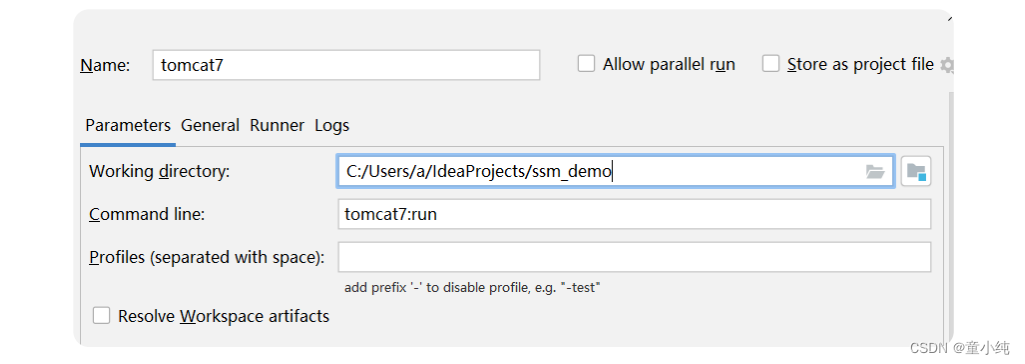
2、启动项目,访问http://localhost:8080/student/all







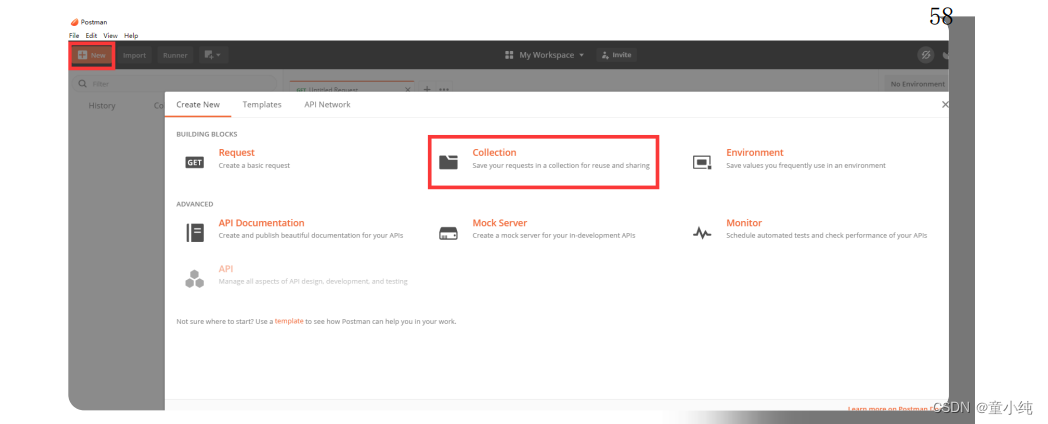
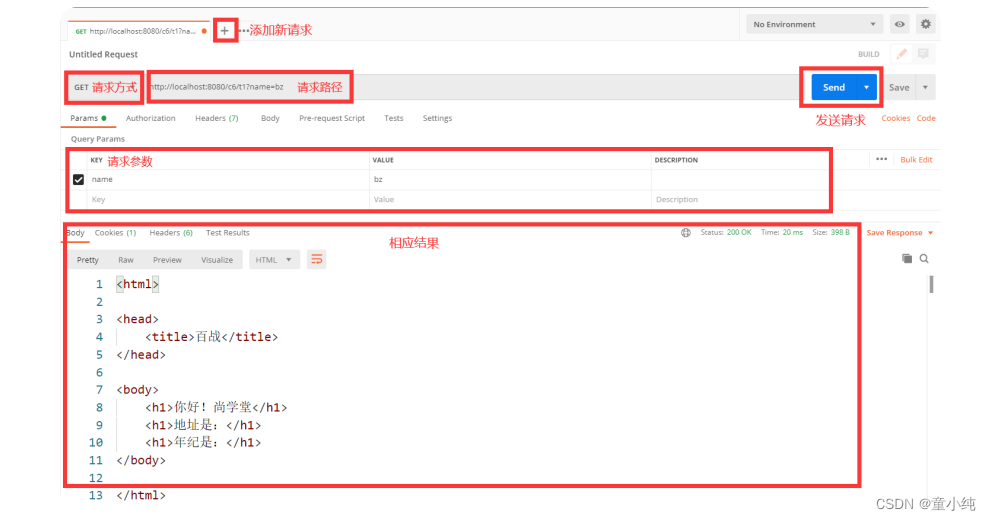
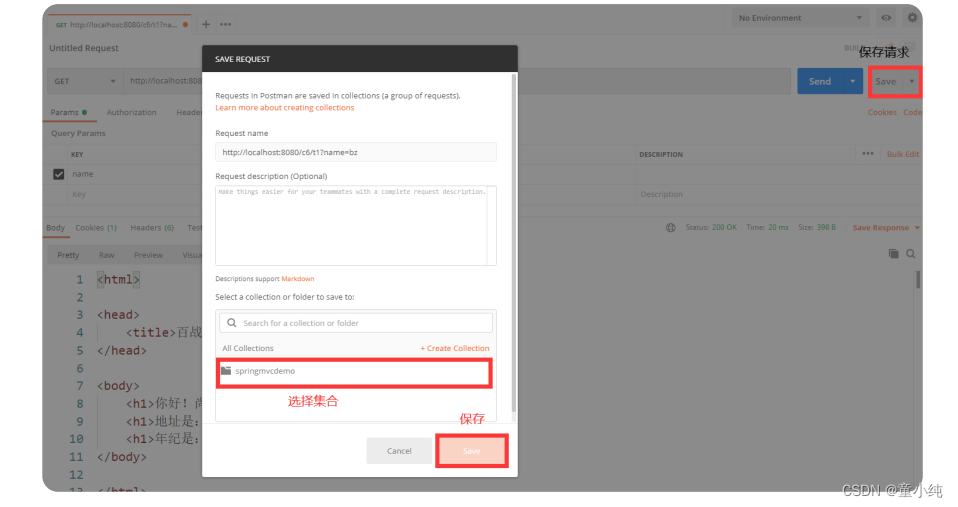



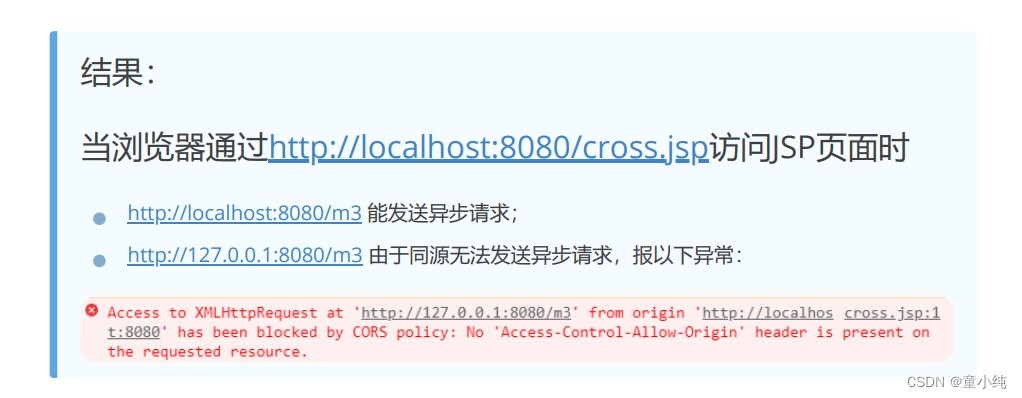


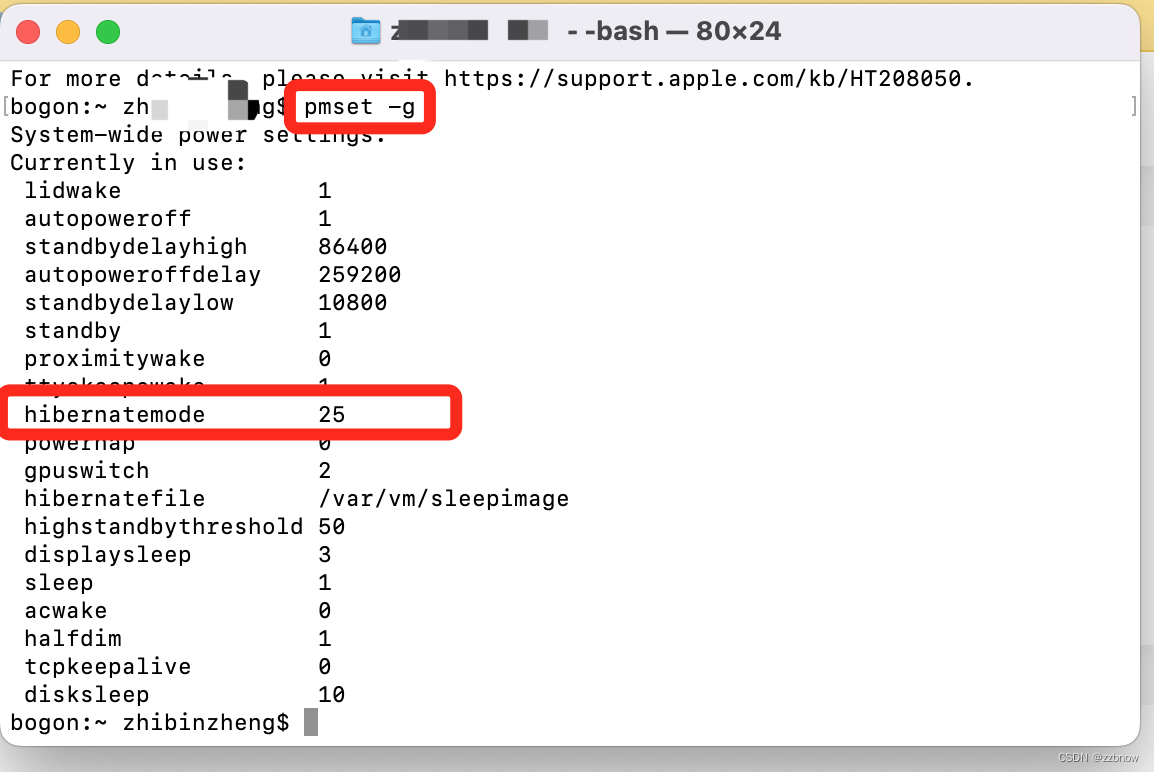

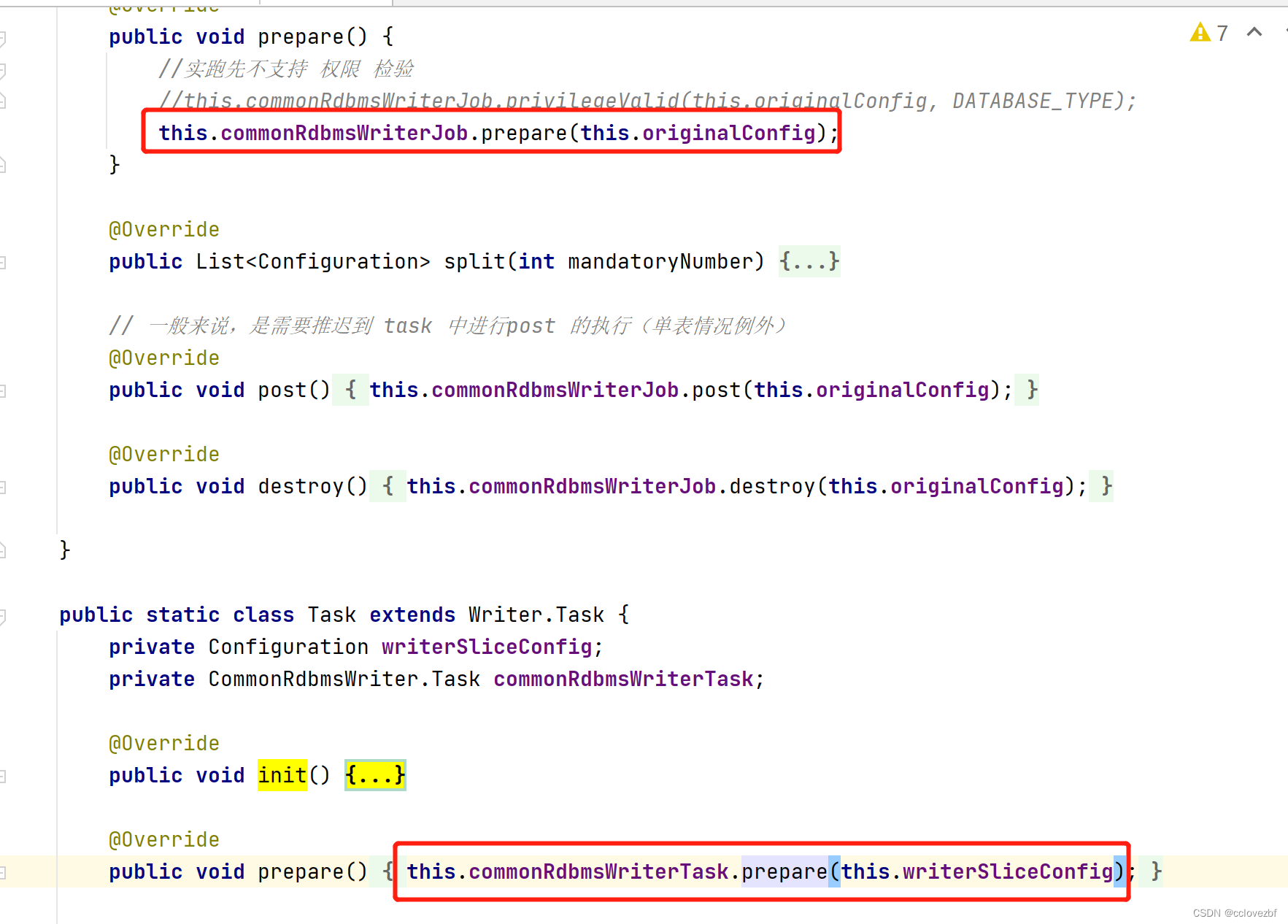
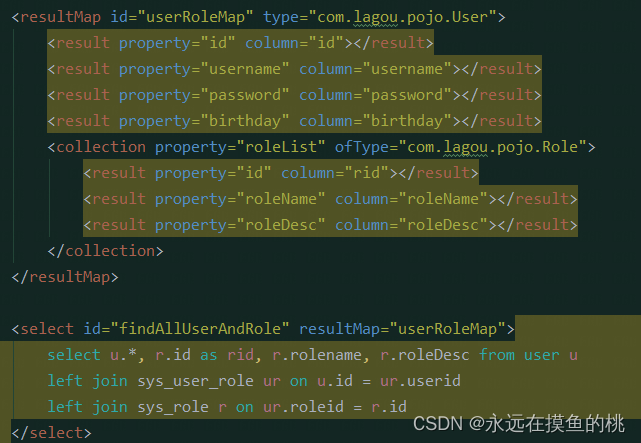



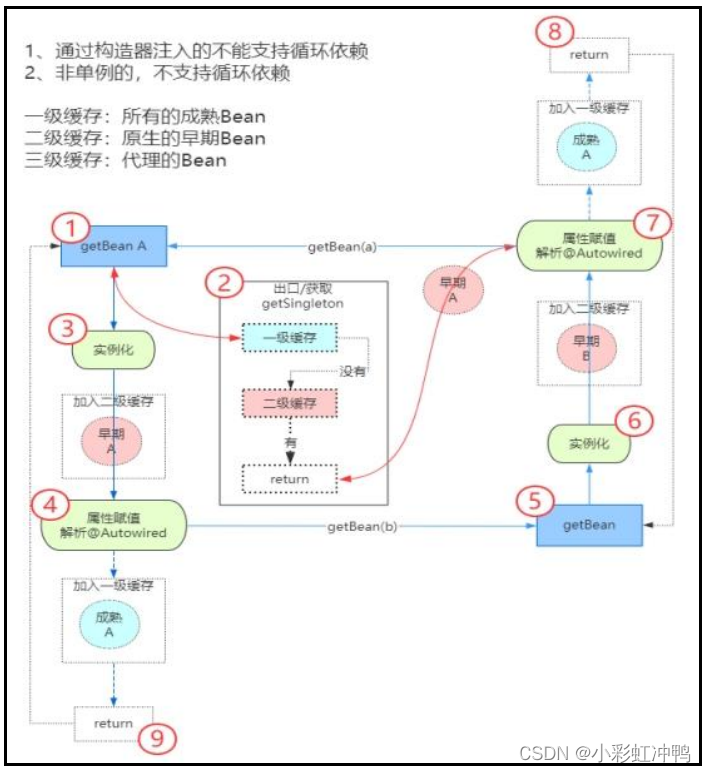
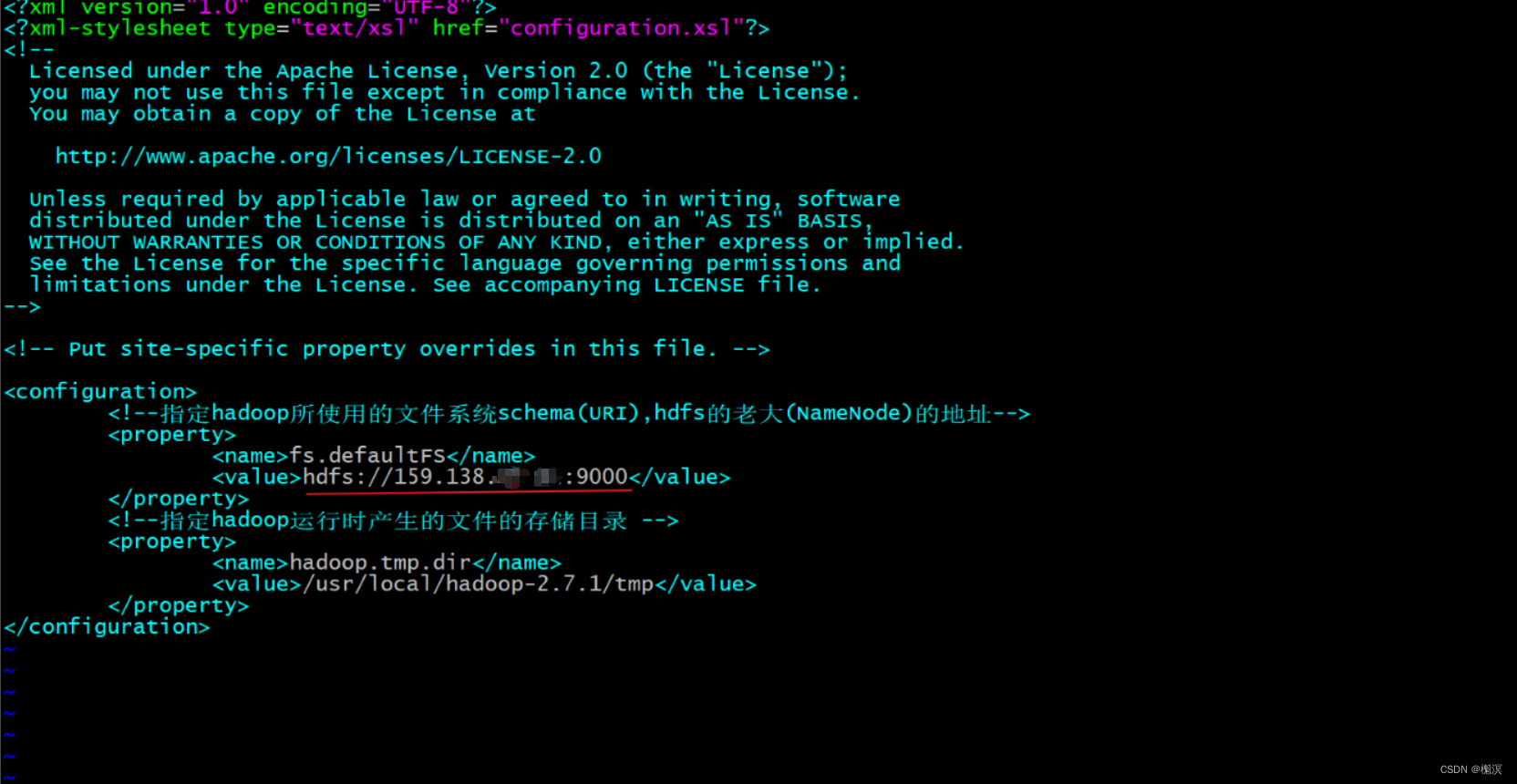

![[附源码]Python计算机毕业设计Django房产中介管理系统](https://img-blog.csdnimg.cn/92fcfebc94f34686920f9fd90a5164e9.png)
![[附源码]计算机毕业设计springboot路政管理信息系统](https://img-blog.csdnimg.cn/32cf592261904523843dd7c8525ee211.png)
